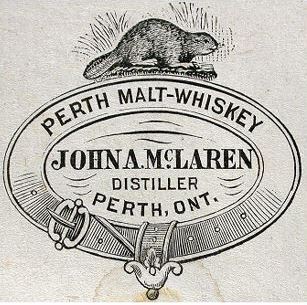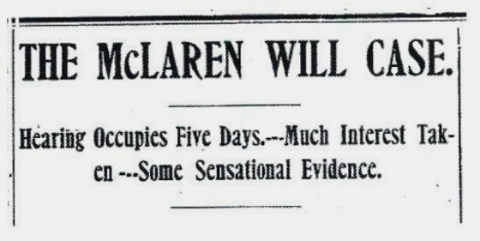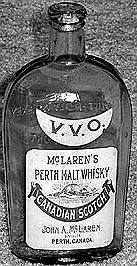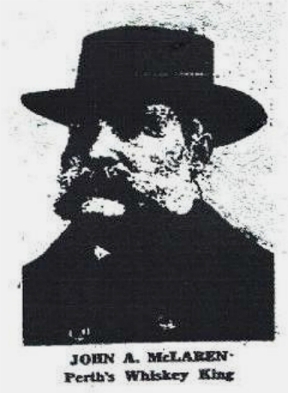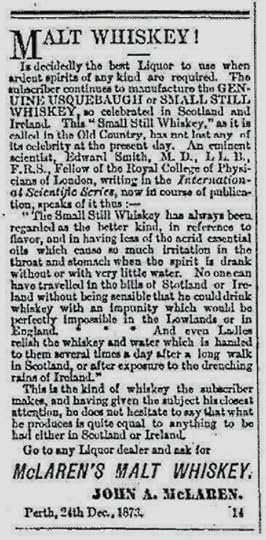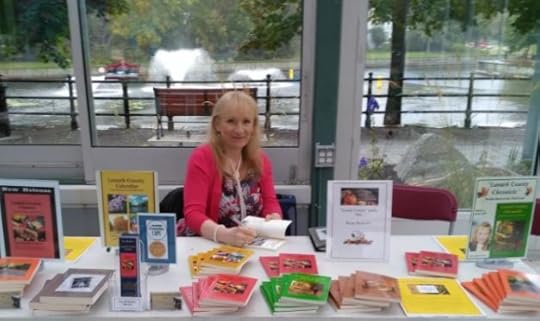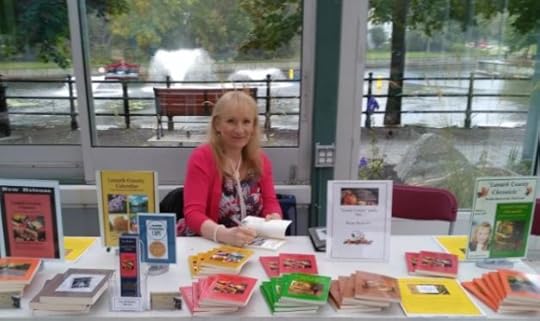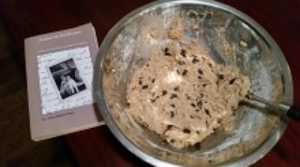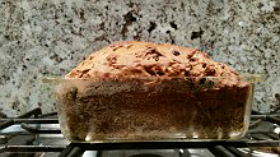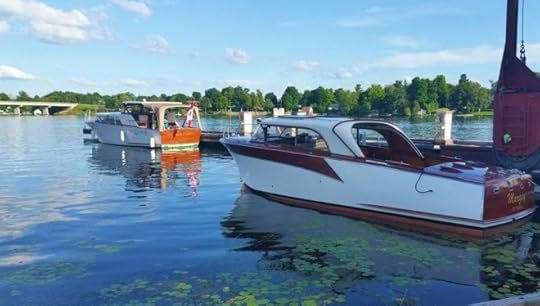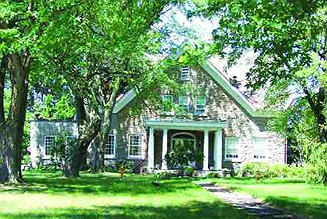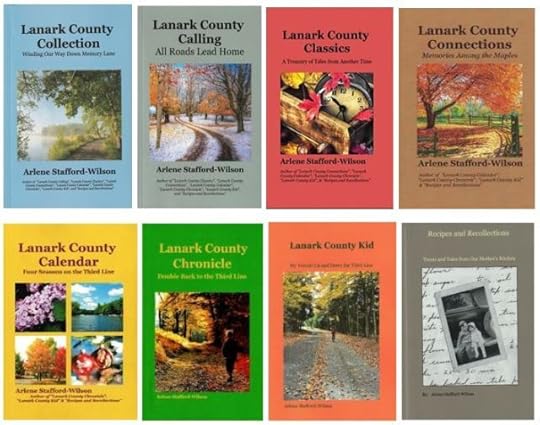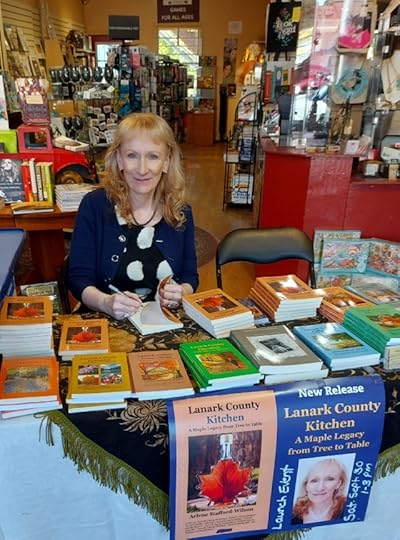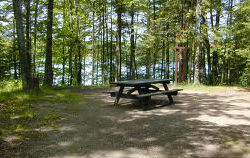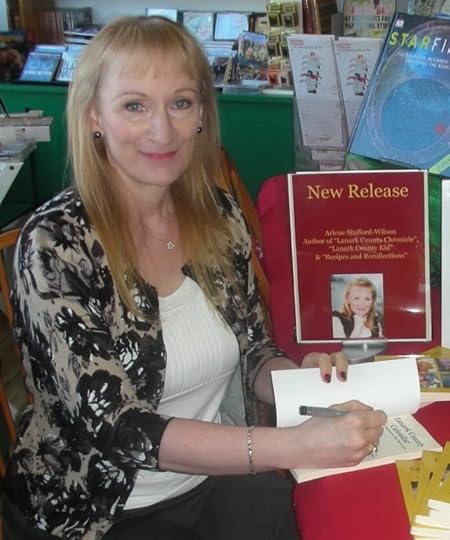Arlene Stafford-Wilson's Blog, page 8
July 31, 2024
Perth’s Millionaire Bachelor – Who Inherited His Fortune?
First to manufacture ‘the Mickey’ – liquor in a 12 ounce bottle, Perth native John McLaren made his fortune distilling alcohol.
A Mickey is actually one of a series of uniquely Canadian alcohol measurements. “Two four” (a case of 24 beers), “twenty-sixer” (a 750 ml bottle of liquor) and “forty-pounder” (a 1.14 liter bottle of liquor) are all virtually unknown outside of Canada.
The very first ‘Mickey‘ was John McLaren’s “Old Perth Malt Whiskey”, a bottle could be had for .80 cents, and was hailed as being “equal to the best ever brewed in Scotland”. Most whiskies in those days were aged very briefly, usually four days or less, and McLaren aged his for a full month before it was distributed to the local bars and liquor stores around Lanark County.
“McLaren’s Whiskey – Aged for a full month!”“.90 cents for a mickey, – .80 cents if you bring your bottle back for a refill…”Robert McLaren, an enterprising young man from Scotland, founded the McLaren Distillery in Perth, in 1841, on a section of land known today as Stewart Park. He died before his son John, came of age, and the business was placed in a trust with Robert’s wife, John’s step-mother. John took over the distillery around 1866 when he was in his mid-thirties.
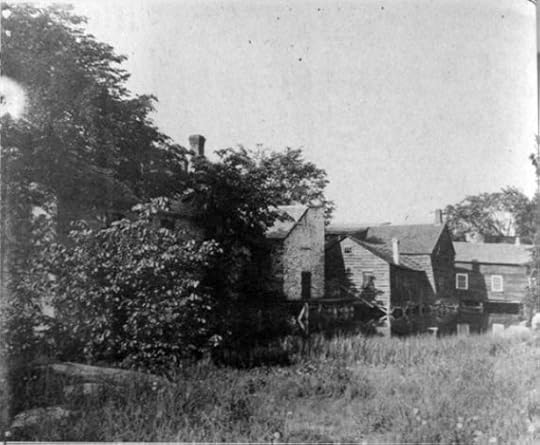
Some say it was the combination of the clear waters of the Tay River and the secrets learned from the Scots that led John to become the local ‘Whiskey King’ or ‘Baron of Booze’.

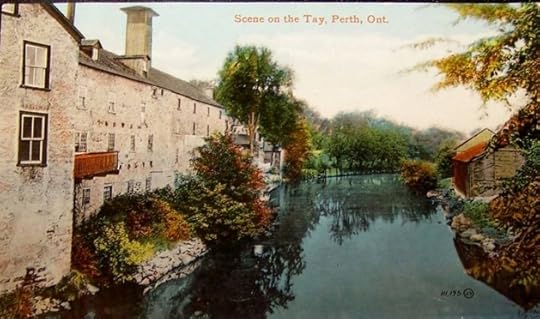

A favourite among whiskey judges, Old Perth Malt Whiskey enjoyed a unique reputation and even some doctors of the time regarded it as “non-injurious”. It became a household staple, said to cure everything from flat feet to the common cold. The popularity of McLaren’s whiskey grew in leaps and bounds, and in its heyday was sold from coast to coast, all across Canada.
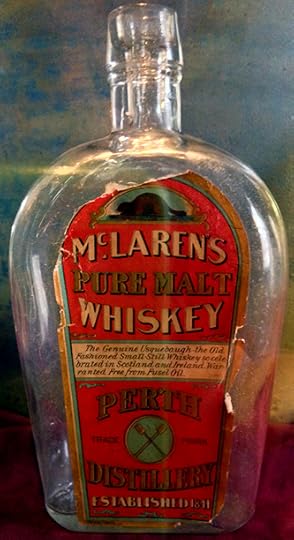
John laboured day and night, expanding his operations, and became the town’s wealthiest businessman. Some say he was secretive, reserved, and was not one to discuss his personal or business matters.
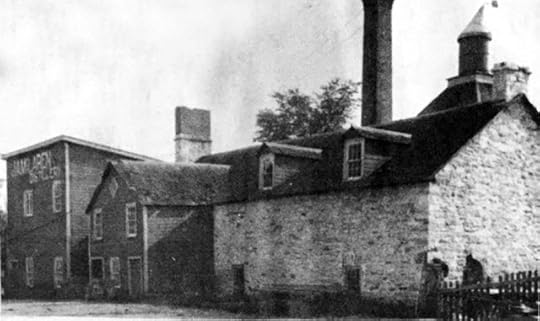
 Photo above: J.A. McLaren Distillery – located behind the town hall in present-day Stewart Park.
Photo above: J.A. McLaren Distillery – located behind the town hall in present-day Stewart Park.
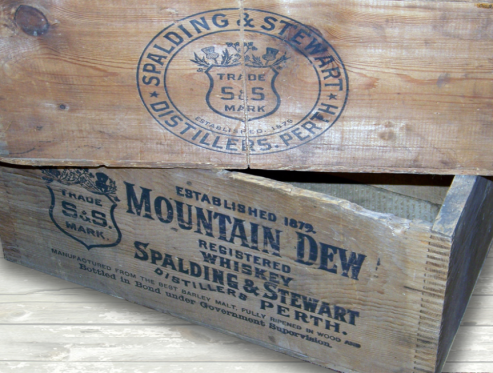

He never married, had no children, and for the most part lived a quiet life and kept to himself. When John McLaren passed away at the turn of the century, many in the town of Perth began to speculate – who would be the heir or heirs to his fortune?

By 1902 the town of Perth was “never more absorbed in one topic of conversation” as they were during the trial held in the local courtroom to settle the case of John McLaren’s Will.
Frank Walker, long-time employee swore that John McLaren had confided in him about his childhood and they shared a special relationship.
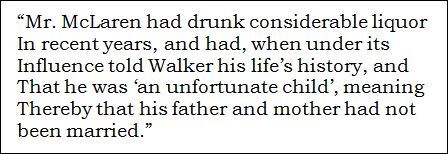
Walker told the court that John promised he would be taken care of from the proceeds of John’s estate”
“If I die tonight, you are provided for.”
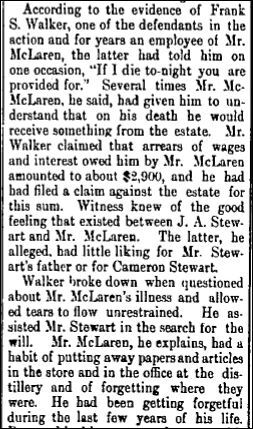
John A. Stewart, McLaren’s nephew, well-known Perth lawyer, and respected member of parliament, claimed that he drafted a will for Mr. McLaren in 1897, witnessed his signature on the document, and that his uncle had left everything to him.
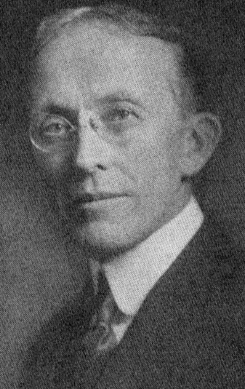

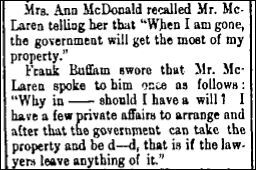
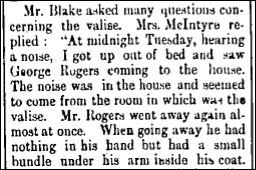
Many people in Perth thought John McLaren left his millions to Minnie Hamilton. The lovely Minnie was known as his ‘favourite’. She was McLaren’s live-in ‘housekeeper’ in their hideaway home outside of Lanark:
“Everyone knew that Minnie was his special girl!”
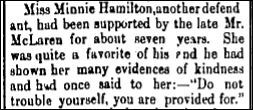
………………………………………..
Many local businesses carried spirits manufactured by McLaren’s Distillery in 1903:Smiths Falls: 9 hotels and 1 store
Carleton Place: 8 hotels
Perth: 7 hotels and 2 stores
Franktown: 2 hotels
Ferguson’s Falls: 1 hotel
Innisville: 1 hotel
Maberly: 1 hotel

“The year 1896 was a good period for the hotel industry in Perth. Five recorded hotels flourished within the town boasting a grand total of 165 rooms, and five bars.
According to 19th century observers, Perth had a high caliber of service, and had an excellent reputation as a fine hotel town. One such observer was the old Perth Expositor which noted how strangers “always judge a town by its hotels” and then carried the impression of hospitality and service to the far reaches of the land.
The hotel business of 1898 was a vast improvement over the rude taverns and inns of early days. Several of the hotels survived the turn of the century and can be readily seen in today’s busy commercial trade. The only hotel still bearing the same name and remaining in the same location is the Revere House at Wilson and Foster.
The hotels of Perth began just prior to the Boer War, and were five: Barrie’s Hotel, Hicks House, Allen House, Revere House and Queen’s Hotel. They were all located in the business section of down town Perth and catered to a through trade from road, stage and traveling salesmen. Since 1900 the road trade has shifted west to Highway 7 where an assortment of motels enjoy a lucrative business from an almost entirely auto trade.
In 1896 the oldest hotel was Barrie’s operated by Thomas Barrie. It had thirty rooms and a well stocked bar. A resort of the surrounding farming community, the hotel enjoyed a heavy seasonal business. Mr. Barrie was hailed as a “jolly good natured fellow” with a “pleasant greeting” for all.
The Hicks House, now the Perth Hotel, was hailed as the “leading commercial hotel” in eastern Ontario, sporting a bar, billiard room, free bus rides and a variety of fare on the table. The proprietor was John Wilson, noted for his catering and disciplining of the “hotel attaches”.
The Queen’s occupied thirty rooms, a bar, a billiard room and stables across from what is now Girdwoods Store on Foster Street. Owned by Frank A. Lambert, father of Edward Lambert, present day proprietor of the Imperial Hotel on Wilson, the Queen’s closed its quarters in 1918 after purchasing Barrie’s from James P. Hogan who succeeded Mr. Barrie as operator. Queen’s and Barrie’s are thus the modern day Imperial Hotel operated by Ed Lambert who took over from his father in 1934.
In 1896 Revere House was a 25 room establishment run by W.J. Flett who is described as one of the best hotel men in the valley. He enjoyed a popular local trace.
Largest hotel in Perth, now closed to business, was a fifty room spread called the Allan House, situated to the west of the town hall in a block now occupied by Chaplin and Code and the Coin Wash. Andrew Robinson the proprietor, was famous for his “uniform courtesy and kindness” and the free bus rides to the train and stages. Mr. Robinson purchased the Allan House from I.C. Grant after ten years as an employee of the Hicks House.
Needless to say, the hotels of Perth had close connections with Crystal Sprine Brewery and McLaren’s Distillery, two enterprises which made Perth famous from Nova Scotia to British Columbia.”
(article published in “The Perth Courier” 1964)
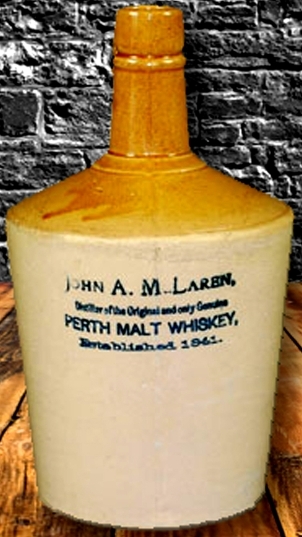
……………………
Did one of these Business Owners in Perth inherit McLaren’s money?Someone in Perth got McLaren’s millions!*images of John McLaren, his whiskey, and ads for the Perth Distillery, and transcripts of the McLaren will case – from – “The Perth Courier”photo – Henry Kehoe in front of Spalding and Stewart Distillery – “The Perth Courier”photo – McLaren’s amber glass whisky bottle from ‘Collectable Treasures’photos – malt whiskey bottle, whiskey jug, old distillery photos – Perth Remembered“So, who inherited John McLaren’s vast fortune?”Did his ‘girl’, Minnie Hamilton inherit McLaren’s millions?Was it his nephew, George Rogers?Did lawyer John Stewart get the money?Was it his half-sister, Lizzie McIntyre?Did he leave the money to business manager, Frank Walker?Who inherited the money from the Whiskey King?Discover more about the curious case of John McLaren’s will, and the trial that had the whole town of Perth talking, read the story “Perth’s Millionaire Bachelor”, from the book “Lanark County Comfort”: .

Arlene Stafford-Wilson
Member, Association of Professional GenealogistsHonorary Life Member, Lanark County Genealogical SocietyLanark County Pioneer Families Humanitarian AwardFrancois Bregha Storyteller AwardAuthor of : “Lanark County Christmas”, “Lanark County Comfort”, “Lanark County Collection”, “Lanark County Calling”, “Lanark County Classics”, “Lanark County Connections”, “Lanark County Calendar”, “Lanark County Chronicle”, “Lanark County Kid”, & “Recipes & Recollections”, and Lanark County Kitchen: A Maple Legacy from Tree to Table”.July 30, 2024
Pakenham Five-Span Bridge
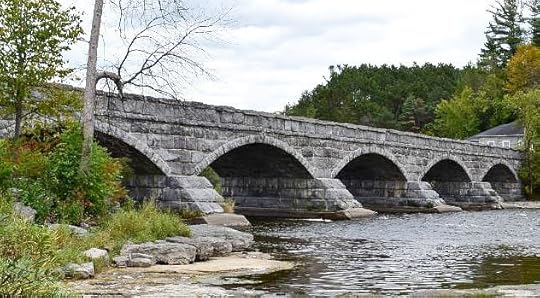
Pakenham
Five-Span Bridge
Original Bridge was Wooden
Like many other bridges in those days the original structure was built of wood, and the elements of heat and cold, freezing and thawing took their toll. The old wooden bridge needed frequent and costly repairs and it was decided that it would be a good time to construct a more durable bridge.
The Pakenham Township Councillors initially considered using iron which was popular at the time, but since the iron bridges were floored with wood they decided instead to build a stone bridge which would be longer lasting and more economical to repair. Plans were drawn for a five arch bridge, and a call for tenders was issued.
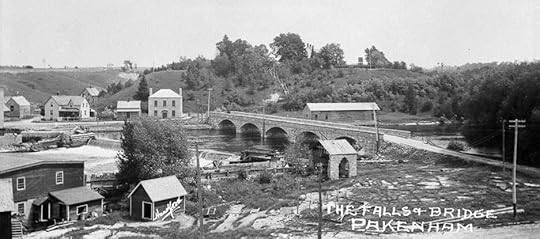
O’Toole and Keating of Ottawa
O’Toole and Keating of Ottawa won the bid, with an agreement to construct the bridge for $13,000. Ads were placed in local papers including the ‘Almonte Gazette’ and ‘The Perth Courier’ looking for bridge carpenters. They were offered an hourly wage of between $2.25 and $2.50, depending on experience, and a foremen would be hired at $3.00 per hour.
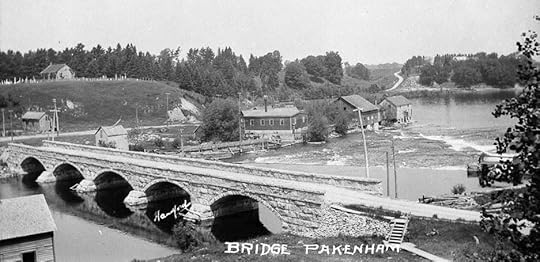
Building the Bridge
The work began on August 23, 1901 and was completed on October 23rd, an impressive seven weeks ahead of their proposed time limit. Seventy local men were employed. A steam-drill was used in the local quarry and a total of four sixty-foot mast derricks were used. It is believed that the quarry was located nearby.
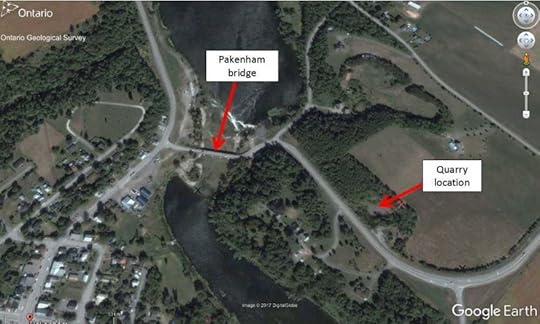
Limestone Quarry
The bridge was constructed from limestone rock. The largest limestone block in the bridge is about 9 feet long and about 2 and a half feet square, weighing over 5 tons. Limestone is an ideal material for this type of construction because it is resistant to heating and thawing, does not deteriorate when road salt is used, and is easier to mine than other similar types of rock.
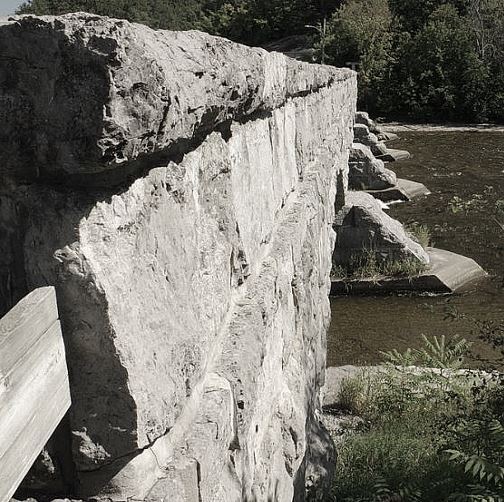
Massive limestone blocks cut from the local quarry
In the early 1900s there were an abundance of stone-cutters and mason who were skilled in cutting and shaping the limestone required for the bridge.
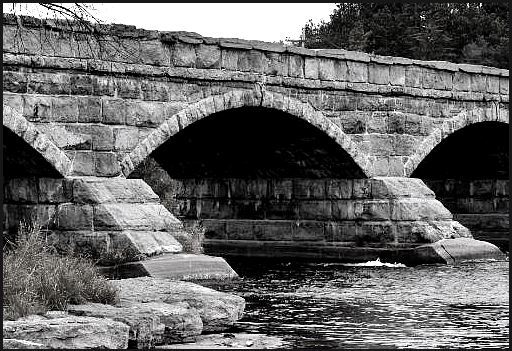
Five 40-Ft Arches
The finished bridge was 268 feet long with five forty-foot arches and was said to be the only one of its kind on the continent. James Connery, Township Clerk, John Smith – Reeve, John Shaw, Michael Connors, William Shaw and Adam Millar – Pakenham Township Councillors all played their part in the planning and execution of the new structure.
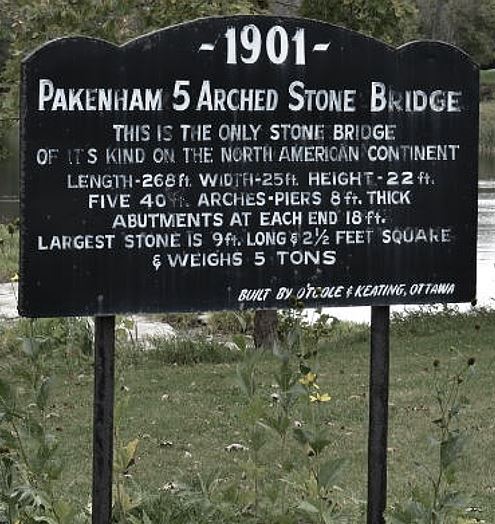
Mr. Robert Surtees of Ottawa prepared the blueprints and was the Engineer in charge of construction. William McDowall was the Inspector of the work, and Joseph Murphy of Arnprior was the book-keeper in charge of the budget while the work was in progress. George Quackenbush, local photographer, provided area newspapers with photos of the finished project.
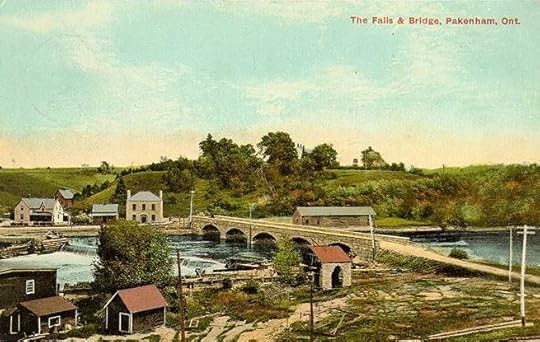
Postcard – 1910
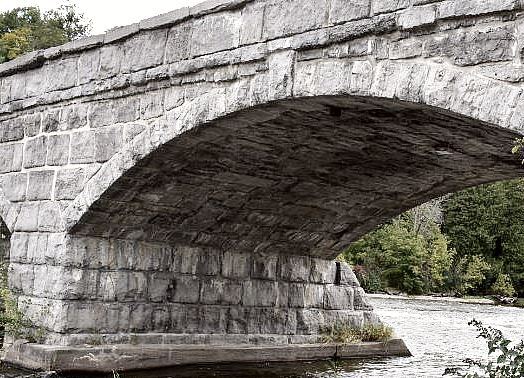
Detail of the arch construction
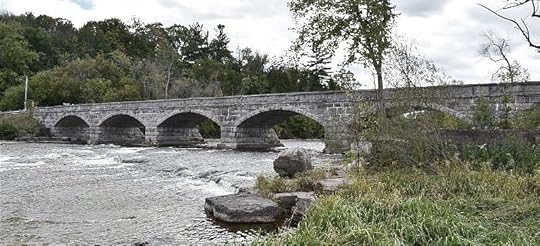
A view of the historic Pakenham bridge – the only one of its kind in Canada

Details from the placque at the bridge site
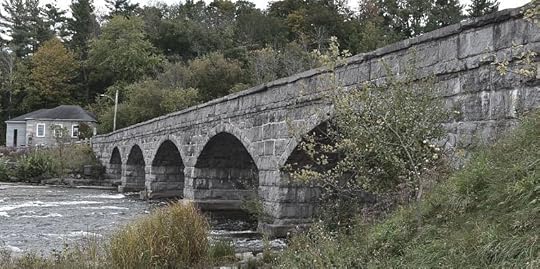
“Anyone who’s been to Pakenham will tell you that the awesome sight of this mighty river swelling and surging under the historic five-span bridge will remain forever etched in your memory. “

photo: Lanark County Tourism
Restoration in 1984
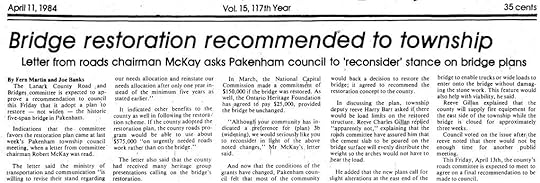
“The Almonte Gazette”

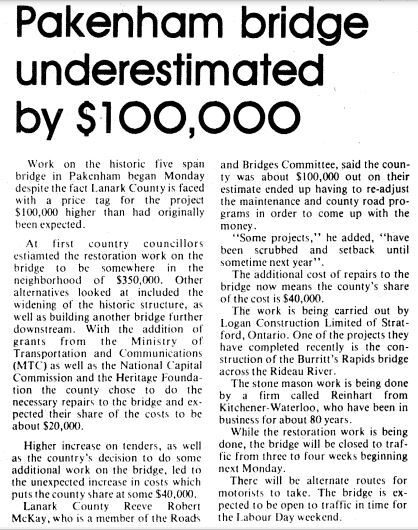
July 25, 1984, “Almonte Gazette”
The bridge was restored in 1984. The stones were carefully removed and cataloged, before being reinstated into their original position. A bed of reinforced concrete was set underneath the stones for additional strength.

Oct. 31, 1984, “Almonte Gazette”
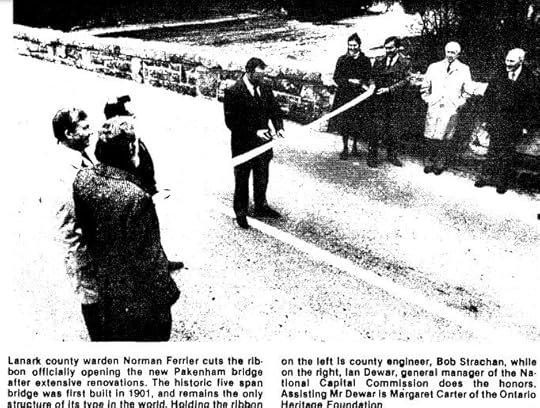
Nov. 21, 1984, p. 1 “Almonte Gazette”
Total Cost
The cost to build the bridge in 1901 was $15,400, including the construction of a temporary bridge for use during the project.
The 1984 restoration of the bridge cost $380,000. Of this, $150,000 was paid by the NCC (National Capital Commission, and $25,000 by the Ontario Heritage Foundation.
2007 Flag
Pakenham amalgamated with Almonte and Ramsay to form Mississippi Mills in 1998. The bridge was chosen as one of the principal symbols for their flag in 2007.
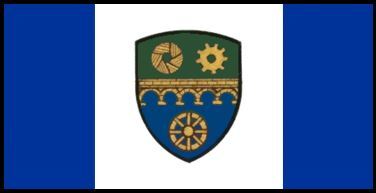
In the Movies
The 2020 Christmas movie, “Fatman”, (starring Mel Gibson, Walton Goggins and Marianne Jean-Baptiste) features a driving scene filmed on the Pakenham bridge.
Seven Wonders of Lanark County
Designated as one of the ‘Seven Wonders of Lanark County’, the Pakenham Bridge will continue to delight visitors and residents alike, with its breathtaking vistas, and rich history.
The bridge is located at 4916 Kinburn Side Road.
For a story set in Pakenham and the nearby Five-Span bridge:
“Lanark County Classics: A Treasury of Tales from Another Time – featuring the story, “Perils in Pakenham” Story features many local family names.
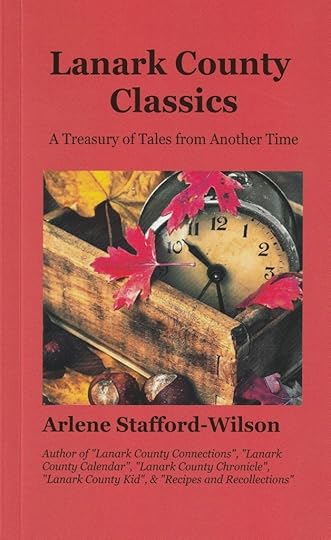
.

Arlene Stafford-Wilson
Member, Association of Professional Genealogists
Lanark County Pioneer Families Humanitarian Award
Honorary Life Member, Lanark County Genealogical Society
Francois Bregha Storyteller Award
Author of : “Lanark County Christmas”, “Lanark County Comfort”, “Lanark County Collection”, “Lanark County Calling”, “Lanark County Classics”, “Lanark County Connections”, “Lanark County Calendar”, “Lanark County Chronicle”, “Lanark County Kid”, & “Recipes & Recollections”
and “Lanark County Kitchen: A Maple Legacy from Tree to Table”
July 22, 2024
Hershey, Smiths Falls
1962-2008
The announcement of the Hershey Chocolate factory opening in Smiths Falls in 1962 brought a sense of hope and optimism to the town, with the promise of hundreds of unionized jobs, and attracting other new business and more tourism to the town.

Smiths Falls Water Tower
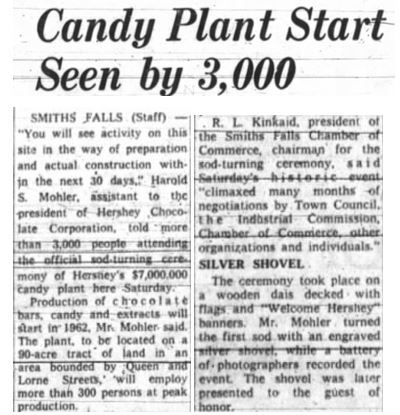
Grand Opening of Hershey Chocolate Corporation, attended by 3,000, April 17, 1961

The style of the Hershey bar wrapper evolved over the years. The one above was used from 1951 – 1968.
In 1973 the company added nutrition-related information to their labels, and in 1976 they began to print UPC codes on their products.
In 1984 the white inner wrap was replaced with foil., and in 2003 the company switched to a one-piece wrap to maintain freshness.
(source: Hershey Archives)

Post card featuring the Hershey Plant and Visitor’s Center in Smiths Falls – c. 1982

The iconic and much-loved Hershey Peanut Butter Cup
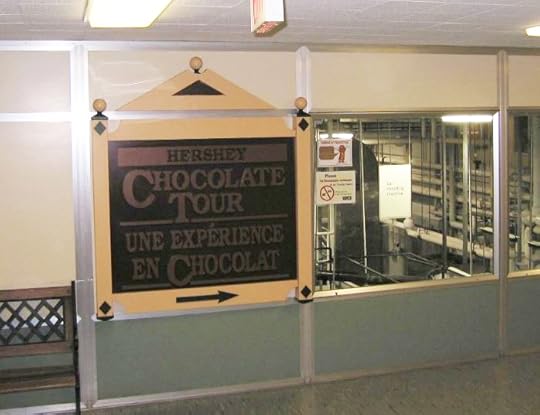
Where the tour of the chocolate factory began…

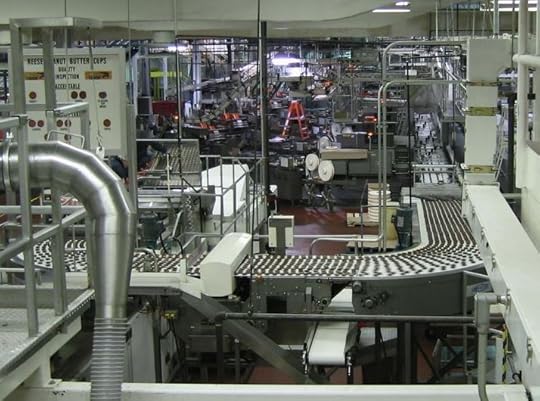
Chocolate travelling through the line at the Hershey factory in Smiths Falls
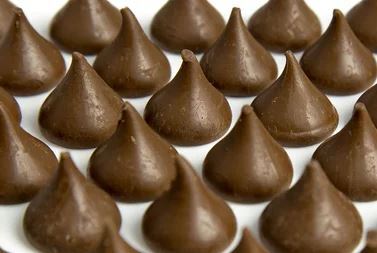
Everyone’s favourite – Hershey’s Kisses!
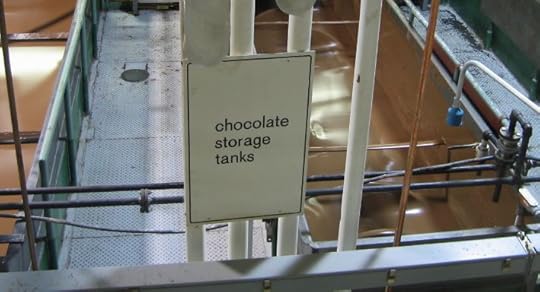
Enormous tanks filled with melted chocolate at the Hershey factory
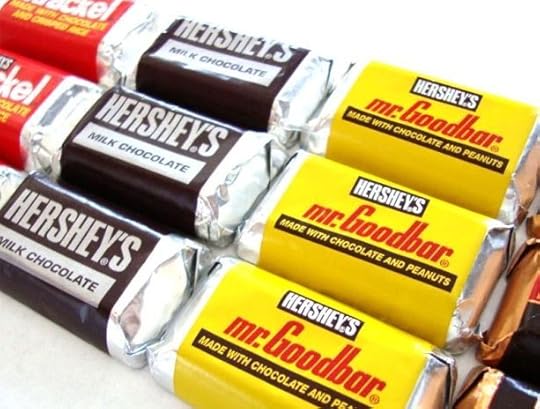
Hallowe’en-Sized bars perfect for hungry trick-or-treaters
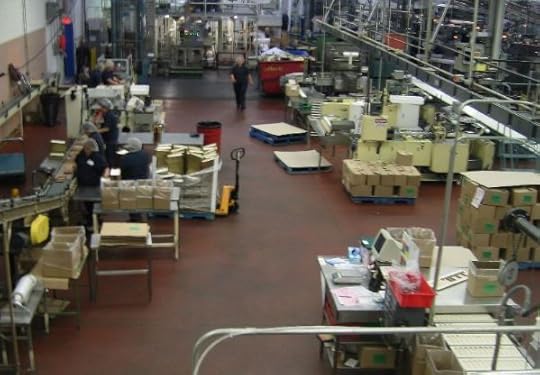
A view of the assembly line at the Hershey factory
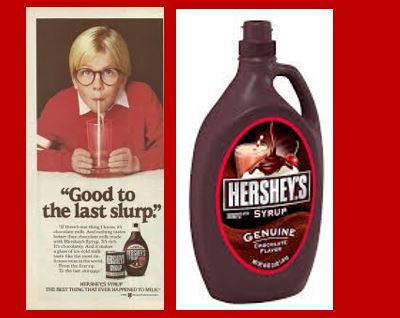
Hershey’s Syrup – a perfect addition to a glass of cold milk

Sign at the entrance to the Hershey Factory in Smiths Falls, Ontario
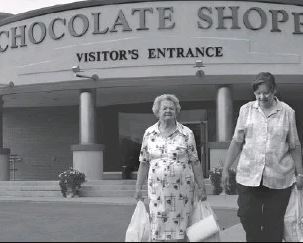
A tour of the Hershey Factory was every kid’s dream

Hershey Closes
after 46 years
On February 15, 2007, Hershey Co., the parent company, based in Pennsylvania, announced that the factory would be closing as part of a re-structuring. Some jobs would be re-located to Mexico.
More than 650 employees were told that the closure was part of a company-wide supply-chain realignment.
According to local statistics, the enormously popular Chocolate Shop drew 425,000 visitors to the town in 2005.
Union spokesman, Harry Ghadban said, news of the closure was an “absolute shock.”
On December 23, 2008, production stopped, and the Hershey factory, and associated store were shut down.

Vintage Ad for Hershey Kisses

The unforgettable scents of chocolate at the factory in Smiths Falls
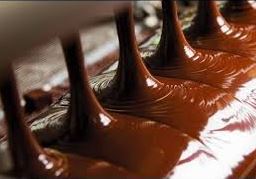
Although the Hershey plant is gone, many of us still have fond memories of visiting this very special place. The sights and sounds, and heavenly scents of this Smiths Falls gem will remain in our hearts and in our minds.
To discover more on the Hershey Factory:
“Sweet Sensation in Smiths Falls”,
one of the short stories in the book, “Lanark County Chronicle”
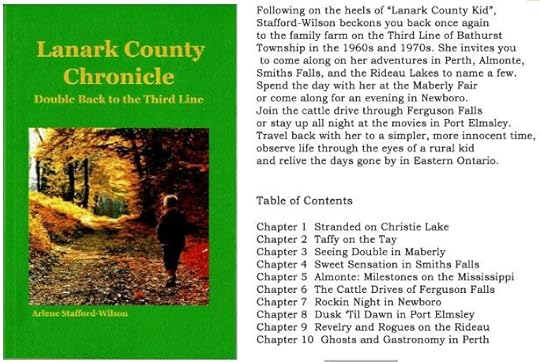
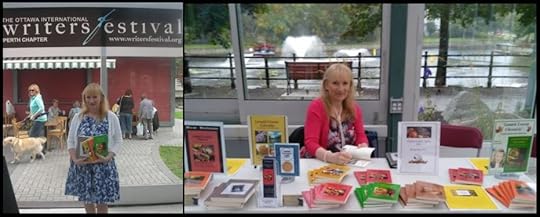
Arlene Stafford-Wilson
Member, Association of Professional Genealogists
Honorary Life Member, Lanark County Genealogical Society
Lanark County Pioneer Families Humanitarian Award
Francois Bregha Storyteller Award
Author of : “Lanark County Christmas”, “Lanark County Comfort”, “Lanark County Collection”, “Lanark County Calling”, “Lanark County Classics”, “Lanark County Connections”, “Lanark County Calendar”, “Lanark County Chronicle”, “Lanark County Kid”, & “Recipes & Recollections”, and “Lanark County Kitchen: A Maple Legacy from Tree to Table”
July 19, 2024
Haggis Candy – Goodies on Gore Street!
It was her father, James Haggis, who started the candy business in Perth, back in 1926, but it will likely be Sophia, who will always be remembered fondly, as the ‘Candy Lady’.
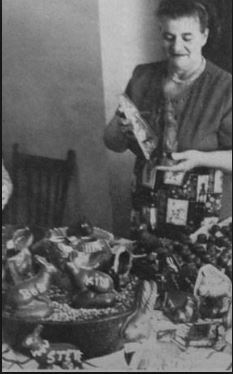
Sophia used the original equipment, passed down to her, from her father, like the big copper pots for melting rich, velvety, chocolate, and buttery peanut brittle.
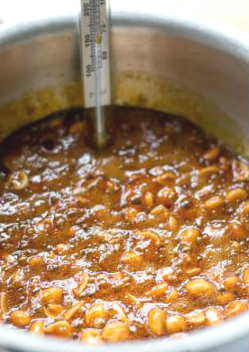

Each year at Easter, Sophia made delicious chocolate bunnies and eggs, and would offer to personalize them with any name. She used a stiff white icing, and piped on the names by hand, as her eager audiences waited for their special egg to be completed.
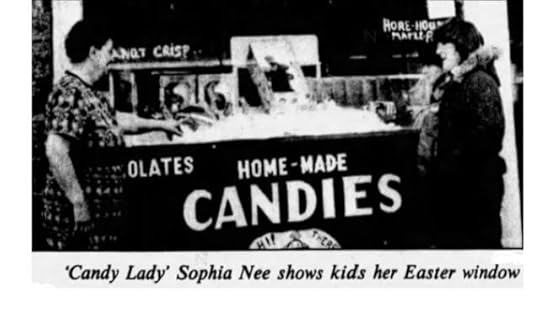
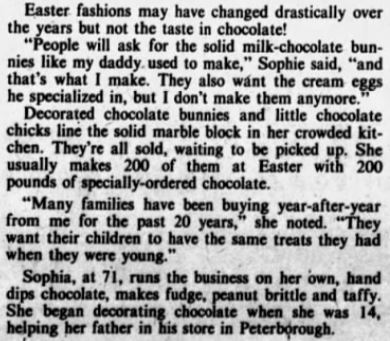
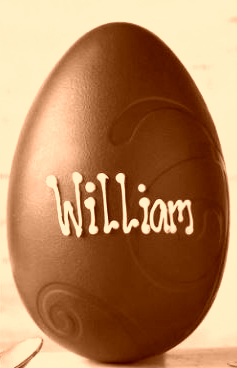
Haggis Candy was located on the main street of Perth, at 60 Gore St. E.

A very special time of year for Haggis Candy was Christmas, and Sophia decorated her store windows with her giant candy-canes, some of them almost six feet tall!
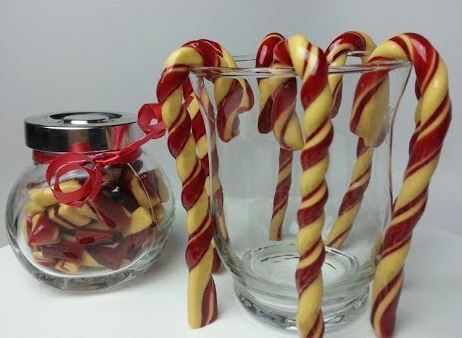
One of Sophia’s specialties was her Horehound candy. It had a very distinctive flavour, and some said that it was a good remedy for sore throats, and congestion. Most of her customers just liked its unique taste. People came from miles around to buy her Horehound.
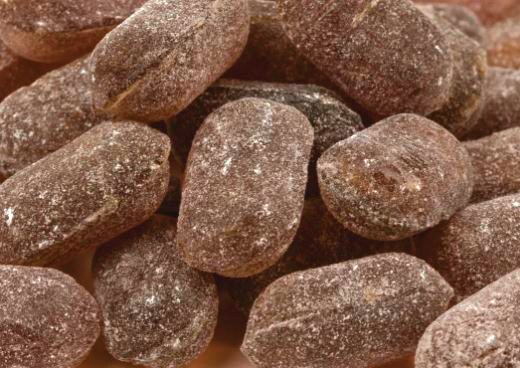
Sophia made her candy from the Horehound Plant. The plants are picked, dried, and steeped with boiling water. The liquid is strained, sugar is added and brought to a boil, then cooled on a marble slab. The finished candies are cut into squares, and rolled in powdered sugar.

Another customer favourite was Haggis’ taffy. Sophia used the original steel hooks to pull her taffy, to just the right consistency.

…..and the finished taffy, ready to enjoy!
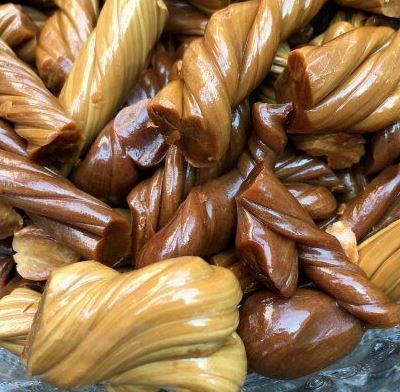
She used the marble slabs, passed down from her father, to cool her fudge quickly, so that it could be cut into squares.
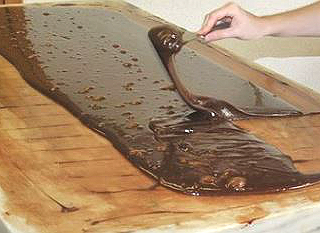
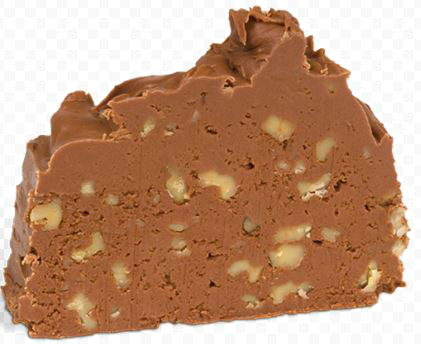
Sophia had a quick smile, and a warm personality. She loved following in the traditions of her father, and most of all loved to see the smiles on her customer’s faces when they tasted her delicious treats.
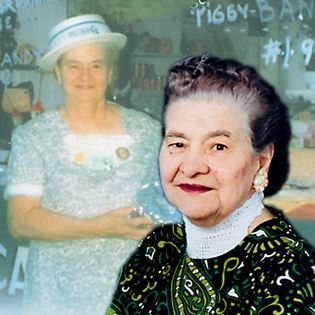
Haggis’ Candy store was where you’d often find my friends and I, after leaving Perth High School in the late afternoon. My personal favourites were Sophia’s milk chocolate peanut clusters, made with real Spanish peanuts! Sophia would place a few in a small, brown-paper bag, weigh them, and hand them to me with a smile. Sometimes I would bring them outside, walk down Gore Street, sit on the bridge, and watch the world go by, as I savoured my chocolate treats!

On hot, muggy, summer days, Sophia made the most delicious banana splits, and often tourists and locals alike, would stop by her store to sample some of her rich, creamy, creations.

In 1988, at the age of 77, Sophia retired from the candy business. She kept active in her later years, and continued to play the piano, as she had often done, at various events in Perth, over the years.
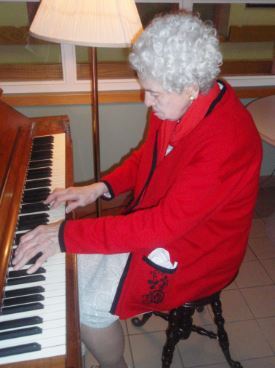
Sophia eventually left Perth, and moved to Kingston. She lived a long life, and there were many very happy birthdays over the years!
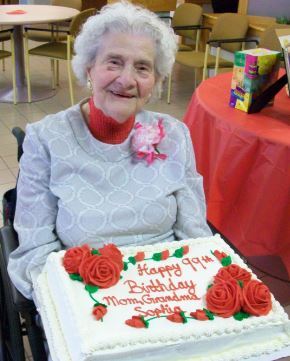
Sophia had a wonderful milestone birthday, when she celebrated her 100th! She still had her kind smile, and bright eyes.
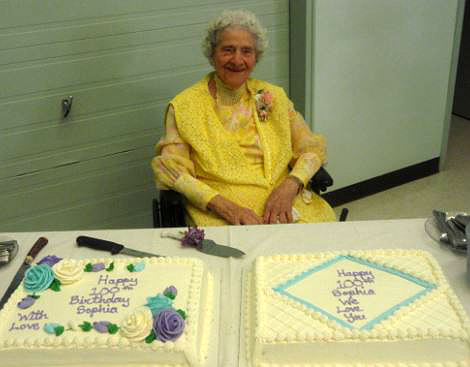
After a long, happy, life, Sophia passed away at Providence Manor in Kingston, on Sunday, November 4th, 2012, at the age of 101.
She may be gone, but never forgotten, and many of us will treasure the memories of our childhood visits to Haggis’ Candy store.
She will always be fondly remembered as the ‘Candy Lady of Perth’.
………………
Read the fascinating story of Sophia Haggis Nee in “Lanark County Calling: All Roads Lead Home”. Learn about Sophia’s childhood in Peterborough, her grandfather the Lockmaster on the Trent Canal, her grandmother Sarah, the published Poet, and find out about her great uncle Samuel Lowry and his scandalous court case. Read about her days as a teenager at the Perth High School, and her chance meeting with the influential Mrs. Jack Stewart. Learn about Sophia’s most unusual trail-blazing career in Kingston, Ontario, before moving back to Perth to take over her ailing father’s business. Read memories of the happy days at the candy store, the customers, the ‘regulars’, and some surprising things about this much-loved lady and well-respected woman entrepreneur in the town of Perth, Ontario.

Arlene Stafford-Wilson
Honorary Life Member, Lanark County Genealogical SocietyMember, Association of Professional GenealogistsLanark County Pioneer Families Humanitarian AwardFrancois Bregha Storyteller AwardAuthor of : “Lanark County Christmas”, “Lanark County Comfort”, “Lanark County Collection”, “Lanark County Calling”, “Lanark County Classics”, “Lanark County Connections”, “Lanark County Calendar”, “Lanark County Chronicle”, “Lanark County Kid”, & “Recipes & Recollections”, and “Lanark County Kitchen: A Maple Legacy from Tree to Table”.July 17, 2024
Rideau Ferry Inn – Those Hot Summer Nights!
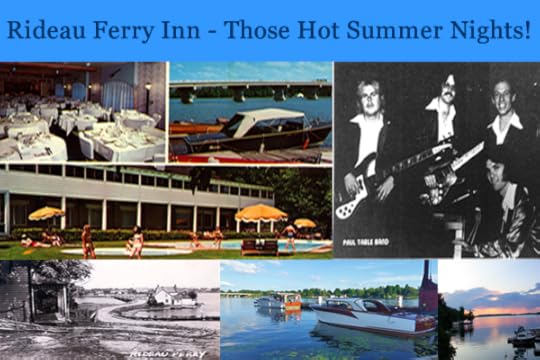
Oh, those hot summer nights at the Rideau Ferry Inn! The dancing, the laughter, stolen kisses, sneaking drinks in the parking lot, and the best live rock and roll around!
Its official name back then, was the Poonamalie Pavilion, but nobody called it that. To my friends and me, it was simply the Rideau Ferry Inn; and you could find us there most weekend nights in the summer, socializing, laughing, and dancing the night away.
Situated along the clear, blue waters of the Rideau, the Rideau Ferry Inn has hosted many generations of tourists and boaters, providing sumptuous meals, comfortable accommodation, and lively entertainment. Arguably, the highlight of the small settlement of Rideau Ferry, our former teenage haunt, wasn’t the original structure at this location. The original building was actually a home.
The original structure was a house built in 1853 by Archibald Campbell. Archibald married Elizabeth Buchanan, a preacher’s daughter. Her father was the Reverend George Buchanan, and was one of the early Presbyterian ministers of Beckwith Township, serving the congregation at Franktown.
Their daughter, Helen Buchanan Campbell, married John Coutts. As her parents were aging, and needed assistance, the couple moved in with them in 1870. During that time, John made some additions to the home, and when he was finished, they not only had ample room for themselves, but had more than enough room to accommodate guests. They began to rent rooms in the house to summer tourists, who were traveling by boat ,along the mighty Rideau waterways.
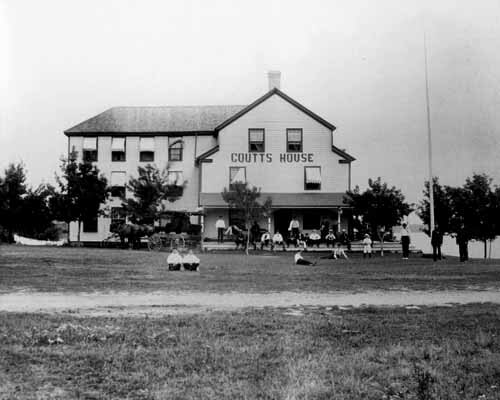
As the years went by, their home became known as ‘Coutts House’, and eventually, had the reputation of being a very fine hotel. In 1893 a three-storey addition was built at the back of the house. A large dining room was added to the first floor. The second and third floors had fifteen hotel rooms each, and an indoor bathroom.
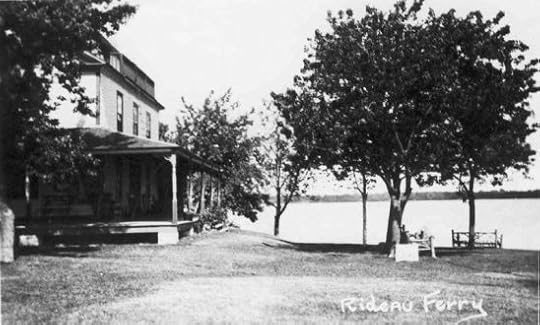
After 1905, the building was rented to a series of business men. During the 1920s and 30s, regattas became popular, and Coutts House held canoe races, and rowboats races. The Coutts family also sponsored competitions for sailboats, and it was the site of many grand daytime celebrations, and intimate evening affairs, for the wealthy travelers, visiting in the summer.
In 1947, Doug Wallace, native of Osgoode bought Coutts House, tore it down, and built a new structure with wood framing, and grey granite blocks. It was a two-storey building, and the second floor featured a large dance area, with seating on three sides.
By the 1960s, the building had become known as the Rideau Ferry Inn, and during this time, became licensed for liquor sales. Up until that time people would smuggle in their own booze, particularly in the roaring twenties when rum-running along the Rideau had its hey-day.
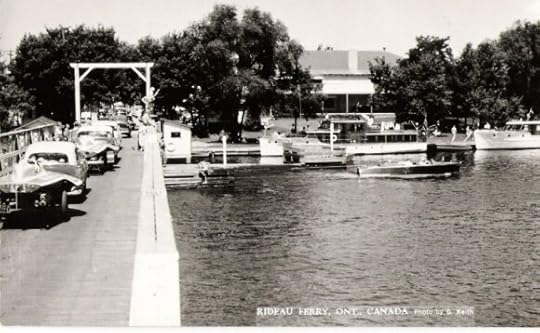
It was in the 1970s, that I first heard the tales about the popular night spot, and all the good times that were had at the Rideau Ferry Inn. There were stories told up and down the halls of the Perth High School – stories of summer romances with cottagers staying at seasonal properties nearby, or the ultra-cool teens that traveled by boat along the Rideau, with their parents. There was also talk of the teenage kids from the States, and their hip clothing and accessories; styles that would take years to reach our little communities near Perth. There were lots of accounts at our high school of the talented rock bands that performed, and of the nights spent dancing to the top hits played by edgy disc jockeys. I couldn’t wait to go and see it for myself.
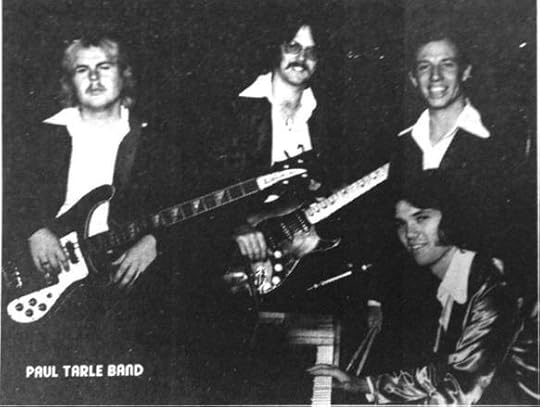
The main house-band at ‘The Inn’ in the early 1970s was the Paul Tarle Band – and we showed off our cool dance moves, as we listened to their popular rock classics.
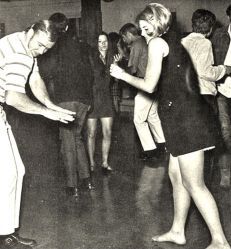
One of the best parties during our steamy Lanark County summers was the annual Rideau Ferry Regatta. Beautiful, sleek, boats from all over, competing for the sought-after prizes, and the prestige of being ‘Number 1’ on the big lakes.

Regattas were all about hot sun, cold beers, the cool, clear, waters, of the Rideau Lakes, and beautiful boats all around us.

We’ll never forget the annual regattas, or the great music at the Rideau Ferry Inn. Bands like ‘Sammy Seaman’ and his group kept us up until the wee hours. Some nights it was ‘Woody Herman and the Young Thundering Herd’, and other evenings we were entertained by the ‘Paul Chabot Band’. Occasionally, instead of live bands at the ‘Inn’, there was a ‘Disco’ dance provided by a local disc jockey, by the name of ‘Sounds Great’.
Many years after our frequent teenage visits to the Rideau Ferry Inn, the building was purchased by Elmer and Eva Purdon. It was still ‘the’ place at that time to host fancy wedding receptions, or 50th wedding anniversary celebrations.
The FireBecause we’d had so many good times at the Rideau Ferry Inn, it was a terrible shock for my friends and I when we heard about the fire in February of 1986, that destroyed our former dance hall. The fire started on the top floor, where the dances had been held for so many years. The ground floor was also destroyed in the fire, and that is where the kitchen, the large dining room, and bar were located.
My friends and I drove down to Rideau Ferry a few days after the fire. I don’t think it was so much out of curiosity, but more out of disbelief. Could it be true, that the place where we’d passed so many of our happy youthful hours was really gone? There were so many memories of friendships, dancing, and all of the special evenings we spent at the Rideau Ferry Inn.
We drove up to where the Inn had stood, and looked around. No one said a word. I think that as we stared at the charred foundation of the building, each of us was recalling our own versions of the times spent there, in our youth. They were such innocent, awkward, magical, teenage times. We sat there for a few more moments, still silent, and then drove away, back up the Ferry Road toward Perth.
Fond Memories RemainThe building may be gone, but our fond memories of the Rideau Ferry Inn will remain with us forever. We will always remember the music, the friends, and the good times. Those long summer nights, when the stars seemed to shine a little brighter, the sunsets glowed a little softer. The peaceful, pristine, waters of the Rideau Lakes made a perfect backdrop for those innocent days of our youth, when life stretched out ahead of us…..so full of promise, with our dreams for the future.
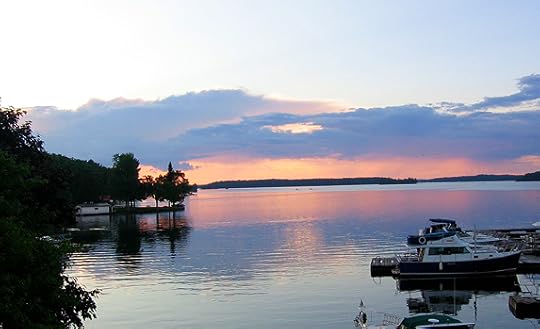
………………..
An excerpt from – ‘Revelry and Rogues on the Rideau’ – ‘Lanark County Chronicle’
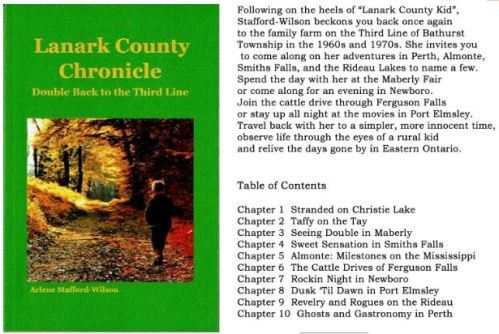
……..
Local Names:Although there were many tourists and visitors in the summer, they were only there for a few short weeks at most. We became acquainted with many of the folks who lived year-round at Rideau Ferry, and some of the local names at that time were: McLean, Donaldson, Buchanan, Gemmill, Frost, Sewell, Coutts, Gallagher, Beveridge, McKay, Wills, McVeety, Millar, Tully, Oliver, Dettrick, Bethune, Purdon, Hitchcock, Fitzgerald, Hall, Gould, Irving, Joynt, King, McCue, Wallace, McKay and Campbell.
…………
Other Stories of the Rideau Ferry InnJoin the author on a steamy hot summer night, park your car outside the Rideau Ferry Inn in the ‘passion pit’, duck as the beer-bottles fly, and the action heats up outside. Hear some of the top bands from the 1960s, 1970s, and 1980s play some classic rock and roll along the peaceful shores of the Rideau.
“Lanark County Collection: Winding Our Way Down Memory Lane”
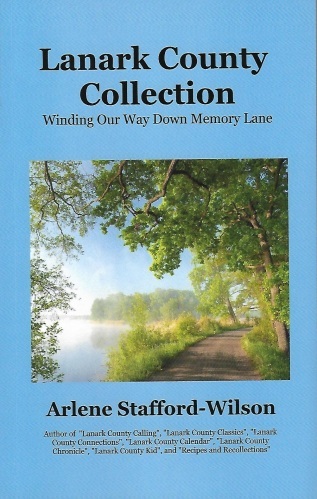
……….

Arlene Stafford-Wilson
Member, Association of Professional GenealogistsHonorary Life Member, Lanark County Genealogical SocietyLanark County Pioneer Families Humanitarian AwardFrancois Bregha Storyteller AwardAuthor of : “Lanark County Christmas”, “Lanark County Comfort”, “Lanark County Collection”, “Lanark County Calling”, “Lanark County Classics”, “Lanark County Connections”, “Lanark County Calendar”, “Lanark County Chronicle”, “Lanark County Kid”, & “Recipes & Recollections”, and “Lanark County Kitchen: A Maple Legacy from Tree to Table”.July 10, 2024
Family Reunions – Lanark County 1970s & 1980s
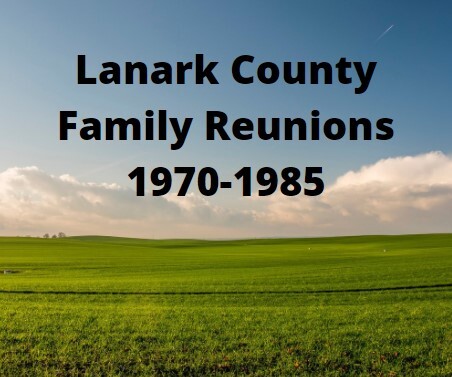
Many families who settled in Lanark County came from Europe – mainly Ireland, Scotland, some from England, and from countless other locations around the world. As sons and daughters grew up and left the family homesteads, they in turn spread out across the country and beyond. Organizing a family reunion became a yearly ritual for some families, and many advertised their reunions in the local papers.
The following is a snapshot of some of the families who held reunions in the 1970s and 1980s in Lanark County. Our story begins with some commentary from a popular local journalist, Bill Smiley, and his personal views on family reunions…..
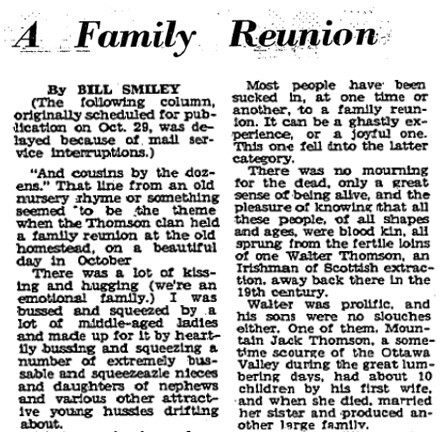

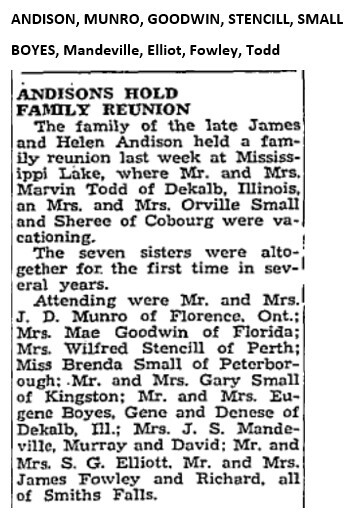
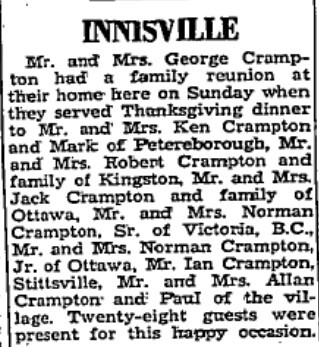
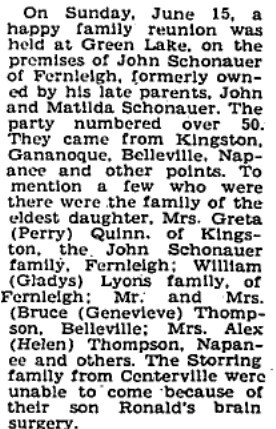
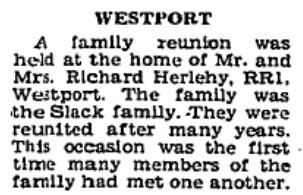
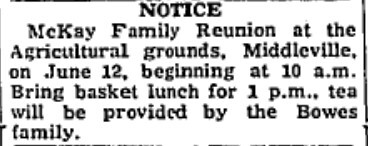
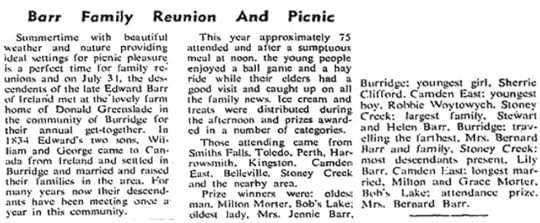
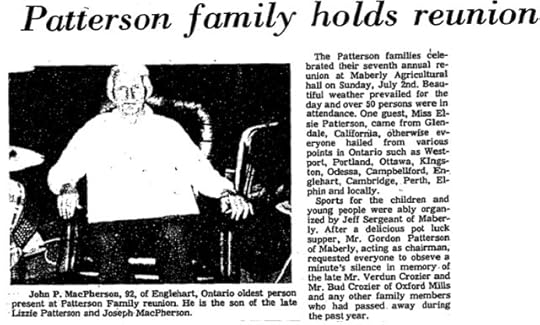
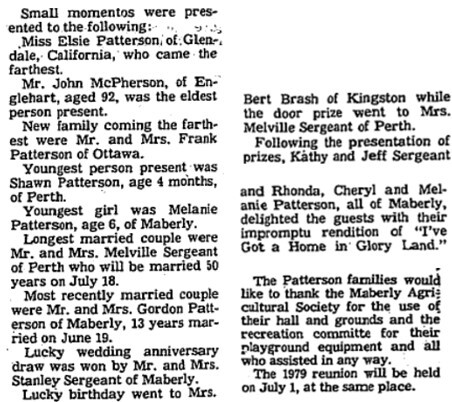
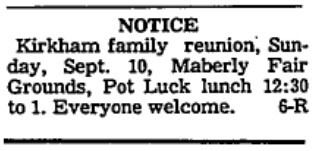
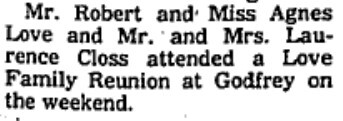

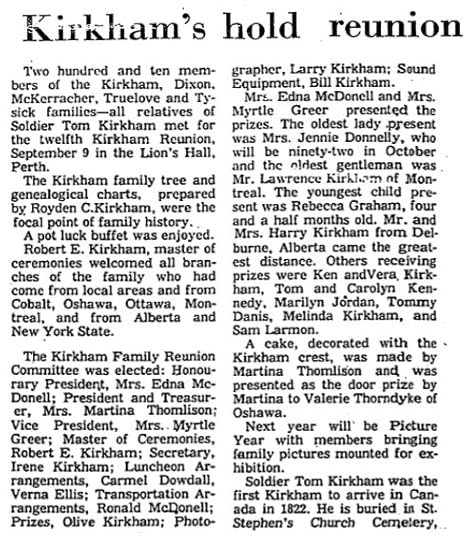

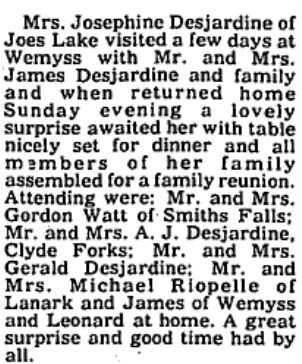


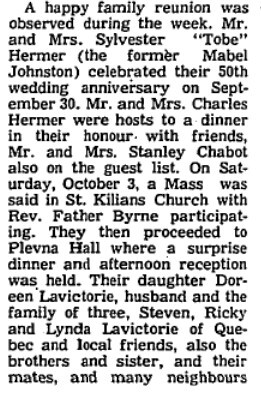


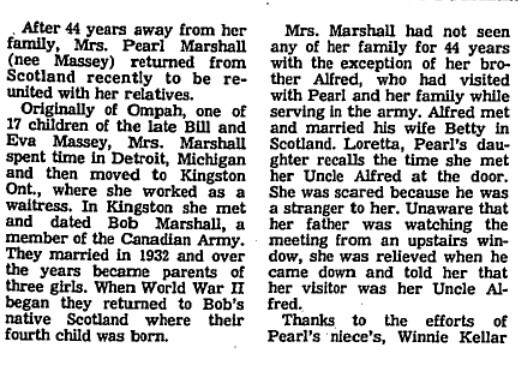

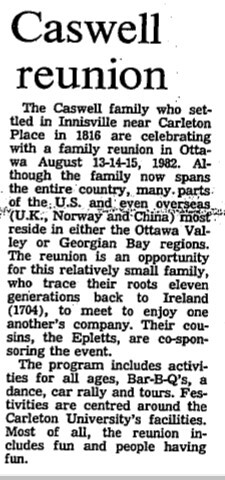
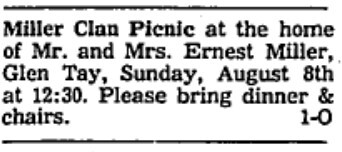
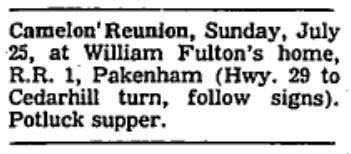

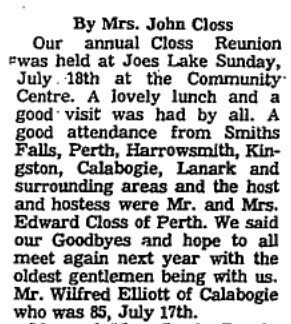
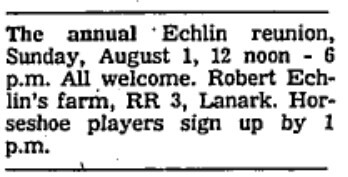




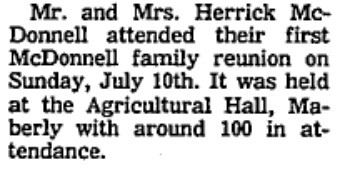
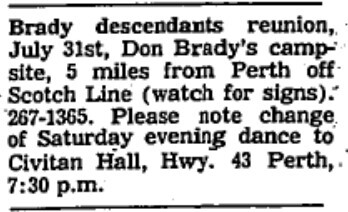
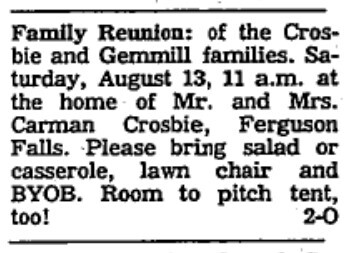
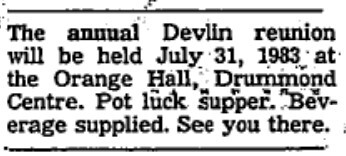
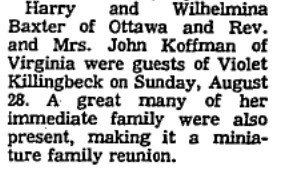


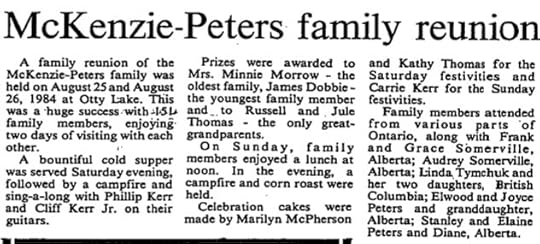
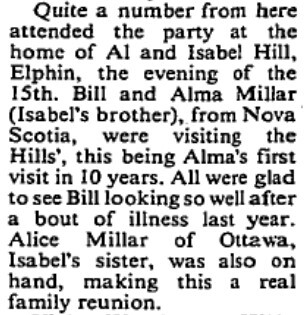
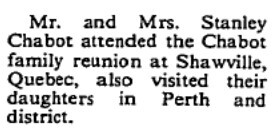

Some of our own family reunions –
Stafford Family Reunion – 2012
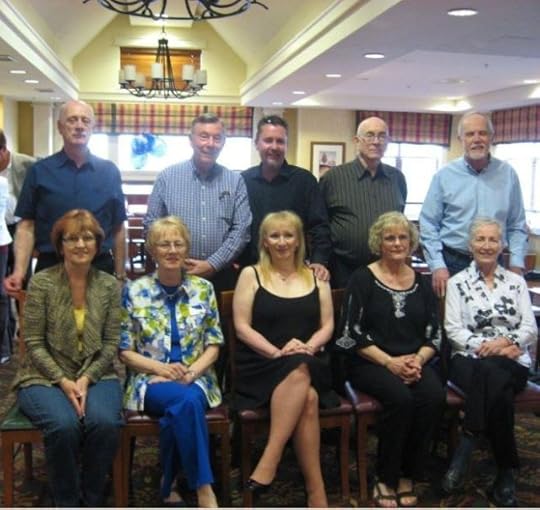
…………………………..
The next Stafford get-together with all five siblings, was on June 15, 2024, at Oshawa, to celebrate Tim’s 80th birthday.
photo: l to rt: Jackie Stafford Wharton, Tim Stafford, Arlene Stafford-Wilson, Roger Stafford and Judy Stafford RyanIn conclusion, take the time and effort to help organize your next family reunion. The years pass by quickly, and the special moments we share are truly priceless.
News clippings of all Lanark County family reunions – from: “The Perth Courier”Arlene Stafford-Wilson
Member, Association of Professional GenealogistsHonorary Life Member, Lanark County Genealogical SocietyLanark County Pioneer Families Humanitarian AwardFrancois Bregha Storyteller AwardAuthor of : “Lanark County Christmas”, “Lanark County Comfort”, “Lanark County Collection”, “Lanark County Calling”, “Lanark County Classics”, “Lanark County Connections”, “Lanark County Calendar”, “Lanark County Chronicle”, “Lanark County Kid”, & “Recipes & Recollections”, and “Lanark County Kitchen: A Maple Legacy from Tree to Table”July 9, 2024
Meet Me in DeWitt’s Corners
‘The Corners’ was a phrase heard often in our small community. The Corners referred to DeWitt’s Corners, a mile or so west of our farm, and was located at the crossroads of the Third Line, Munro’s Side road and Cameron’s Side road.
The early settlers in Bathurst Township were keen to have their own church instead of driving to St. John’s Church in Perth, or St. Bridget’s Church in Stanleyville. Roads were treacherous at times in the winter, with deep snow, sometimes freezing rain, or both. John DeWitt, son of a pioneer settler, and his wife Mary Neil knew there was a need for a Roman Catholic Church to serve the growing community. Hoping to improve the situation, they made a promise to donate the land to build a church.
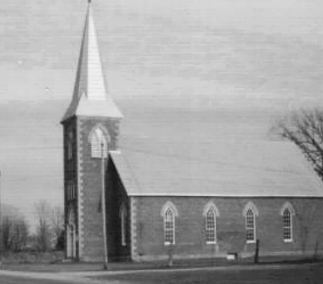
The construction progressed quickly, and the first mass was held on November 23, 1889. The church was packed that day, and this stately building has served generations of families around DeWitt’s Corners and the area for over 125 years and counting.
A bike ride down the Third Line often meant that my friends and I would gather around the millstone at Cavanagh’s general store. It was a central meeting place where we could sit and talk. Between us, we could usually scrounge together enough pocket change to buy some penny-candy at the store.
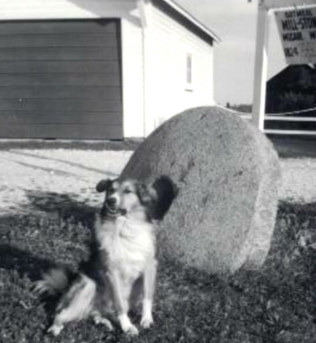
DeWitt’s Corners was a busy place in the 1960s and 1970s, with cars stopping at Cavanagh’s store for gas and groceries, or zooming up the Third Line toward Christie Lake. Christie Lake was a tourist destination with accommodations of all kinds for seasonal visitors. Norvic Lodge, Arliedale Lodge, and Jordan’s Cottages, were some of the busiest places in the summer months.

Across the Third Line from Cavanagh’s store was the old Bathurst cheese factory. The factory produced cheese until about 1954 and then ceased operations as other larger factories began to edge out the smaller producers.
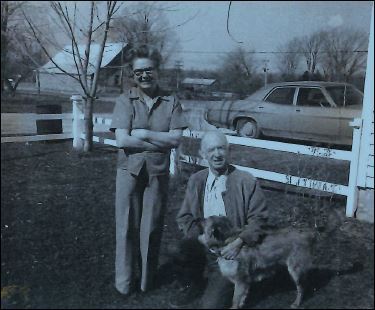
Not far from the ‘Corners’, just up Cameron’s Side Road was the little white school house – S.S. # 4 Bathurst, where many of the members of our family attended school. Mary Jordan taught all eight grades, keeping order in a compact classroom, heated with a wood stove, and bursting with energetic farm kids.

2nd row – Standing Kim Kyle,Betty Conboy, Judy Radford, Janice Jordan , Nancy Radford, Beverly White, sitting in front of Nancy Radford is Bobby-Jean Gamble and beside her is Mary White
Beside Kim Kyle is Brent Cameron, Bryan Tysick, Maxine Closs with her arms around Judy Radford, behind her is Kenny Perkins, Brad Kyle, Susan Turnbull, Darlene Charby,Back row Randy Sargeant, Kent Shanks, Mrs Carrie Barr, Doug Jordan, Brian Miller and Mark Greenley
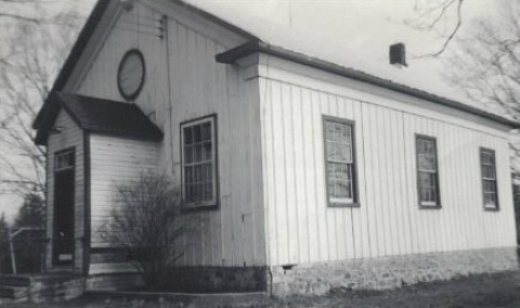
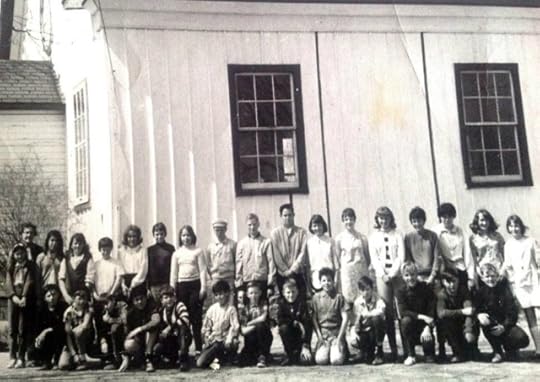
When Mary Jordan wasn’t busy teaching eight different grades, she coached the DeWitt’s Corners softball team. Both of my sisters Judy and, Jackie, played on the championship team in 1959. My brother Roger was on the team in 1964.
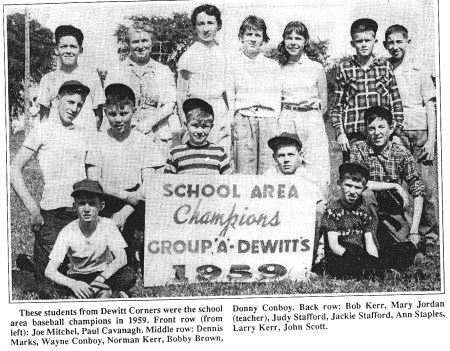
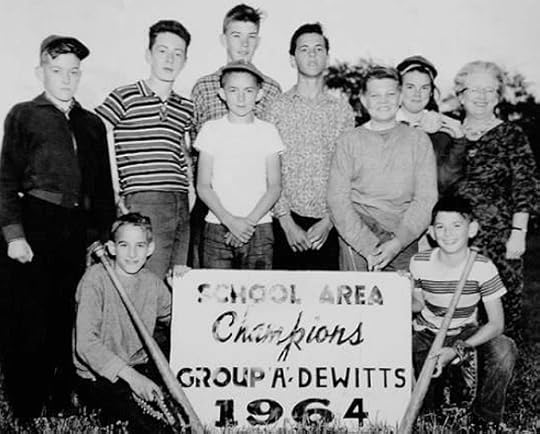
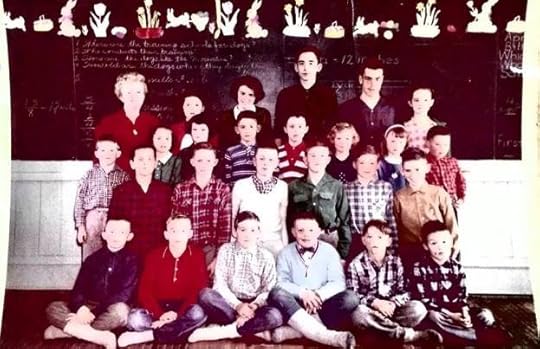
Interior photo of S.S. # 4 Bathurst School
Front row Earl Conboy, David Scott, Arthur Perkins, Ron Brown, John Conboy, Bill Kyle
2nd row Arnold Perkins,Joe Mitchell, Roger Stafford, Norm Kerr, Bob Perkins,Paul Cavanagh
3 rd row Peter Kerr, Betty Conboy, Anne Kerr, Bill Cavanagh, Carl Gamble, Judy Radford, Janice Jordan, Doug Jordan Back row Mary Jordan, Kim Kyle, Connie Conboy, John Scott, Richard Cooke, Sharon Doyle
—–
There always seemed to be a sense of history in DeWitt’s Corners, and intriguing tales of the early settlers were told and re-told around that small hamlet. Most of us in the community were aware that Helen Cavanagh was a member of the DeWitt family, but many may not have realized how far back her roots stretched to the earliest settlers.
William DeWitt, and his wife Margaret Noonan DeWitt had a large family of eight daughters: Helen Mae DeWitt who married Jim Cavanagh, Margaret Gertrude DeWitt, Vera DeWitt who married Ed Brady, Carmel DeWitt Matthews who settled in San Francisco, California, Jean DeWitt Garry, Mary DeWitt O’Hara, Josephine DeWitt who settled in Toronto, and Sophia DeWitt.
Cavanagh’s Store
The store opened on June 3, 1947 – carrying a full line of groceries, confectionaries, and tobacco products. Along with groceries and everyday sundries, Cavanagh’s store also sold gas supplied by Esso, a branch of Imperial Oil. Locals and cottagers, along with campers at nearby Christie Lake, were all pleased to hear that there would be a general store in the area, and they would no longer have to drive to Perth to pick up daily necessities.
Jim and Helen Cavanagh operated the popular neighbourhood store for nearly four decades until they retired in 1985.

Many members of this proud community played a part, and their descendants carry with them the legacy of this historical settlement in Lanark County:
Adams, Allan, Blackburn, Blair, Brady, Cameron, Carberry, Cavanagh, Chaplin, Closs, Conboy, DeWitt, Dixon, Doyle, Fife, Foster, Gamble, Heney, Hogan, Johnston, Jordan, Keays, Kerr, Kirkham, Korry, Kyle, Leonard, Majaury, Menzies, Miller, Mitchell, Morrow, Munro, Murphy, Myers, Noonan, Palmer, Perkins, Popplewell, Radford, Ritchie, Somerville, Scott, Siebel, Stafford, Stiller, Truelove, Turnbull, and Tysick.
Thanks to JoAnne Cavanagh Butler for contributing the photos, and thanks to Janice Gordon, JoAnne Cavanagh Butler, Roger Stafford and Beverly Miller Ferlatte for all of their help identifying our neighbours and classmates in the photos!
For more information about the history of DeWitt’s Corners, and the people who settled in the community, you can read the full version of the story in “Lanark County Classics: A Treasury of Tales from Another Time”
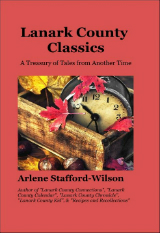

July 8, 2024
Lake Life – A Rideau Ferry Love Story
They were a couple of crazy kids from Kirkland Lake – outdoorsy-types, loved to ski and ride ski-doos, and most of all, they loved each other. After high school, they enrolled at Carleton U. , married in 1982, settled down in Orleans, and raised a couple of kids.
Twenty years ago they went for a drive, and that was the first time they laid eyes on the Rideau Lakes. They’d never seen anything so blue, so peaceful, and so perfect. He looked at her and said, “This place feels like home.” And at that precise moment, they decided that someday they would build a house on that very spot.
At first, they bought a trailer, and a plot of land near the shoreline, and every season, without fail, they returned to the Big Rideau.
Their kids grew up, and they knew that it was time – time to sell the house in the suburbs and build their dream along the water’s edge. The Big Rideau had been calling their names for years, and they were finally able to answer.
Mornings begin now with pink skies at sunrise, and waves gently lapping the shores. Evenings wind down to the sound of the loons as the sun dips low along the horizon and eventually disappears into the lake.
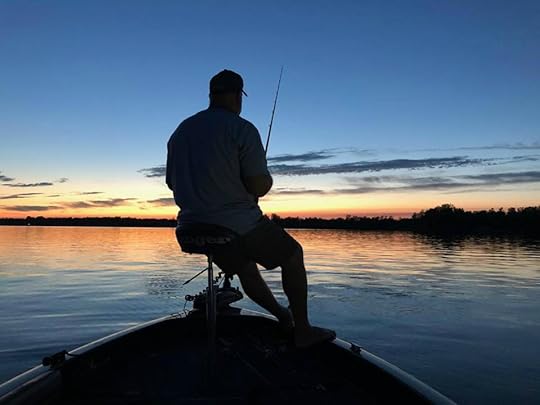
A bumper crop of apples, along with a perennial Perth Fair prize-winning recipe for Applesauce Loaf from “Recipes & Recollections”, filled their lake house with the warm scents of home baking.
Time is spent lovingly restoring a 1961 classic boat to her former glory, and day-trips to Perth or Brockville, along the scenic Rideau waterway.

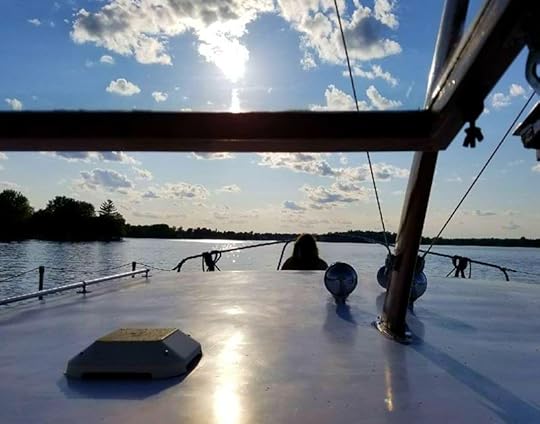
You never know who might stop by for a visit in Rideau Ferry!

Pull up a chair on the deck, and soak up the warm summer sun…
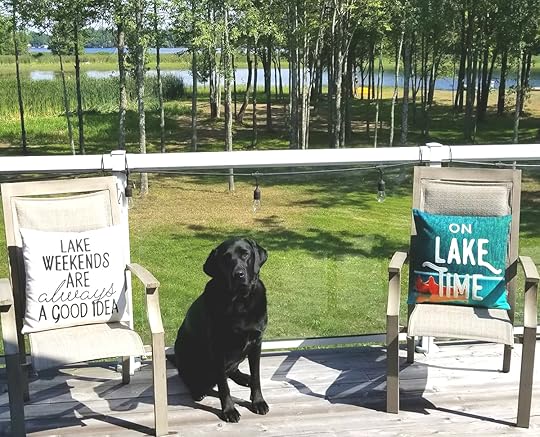
Make some new friends at the annual Rock the Dock…
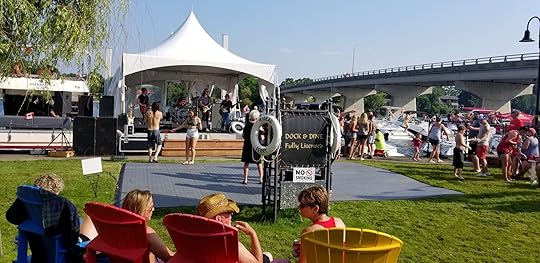
or dance the night away at the yearly corn roast, along the shores of the Big Rideau
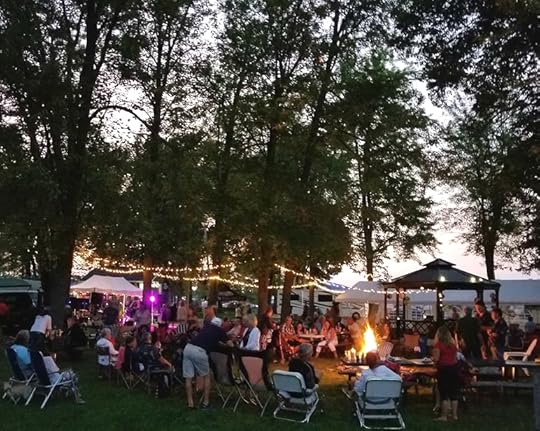
Grab a cold drink, and sit outside at the fire pit.

Whether you feel like socializing, or would prefer a quiet evening listening to the sounds of the loons, there’s always something to do at the lake!

The beguiling charm of Rideau Ferry has been capturing the hearts of visitors and residents alike going back as far as the days of the pioneer settlers.
“One of the most notorious characters that passed his leisure time along the Rideau waterways was none other than Alphonse Gabriel “Al” Capone. Al Capone was a mobster based out of Chicago, and he made his fortune as a bootlegger, during prohibition.
He is said to have been a frequent visitor to a grand home in Kemptville, that was once owned by John Harris. Harris was a local who became a pharmacist, and worked in Chicago.
It has been suggested, that because of his background in chemistry and science, he was possibly cooking up quantities of moonshine in his home, and as you can imagine, this was of great interest to Capone.
In 1927 Harris built the beautiful, stone mansion that still stands today on Oxford Street in Kemptville. Locals say that the house was built with a state of the art security system, and series of underground passages. The grand home features leaded glass, a main switch to control all of the lights in the house, and a panic button wired directly to the local police station. It has yet to be confirmed that there are two tunnels leading from the house; one that links the home to the Kemptville Hotel, and the other which connects the house to the river.
Some of the stories have suggested that Capone himself hid a quarter of a million dollars, between the walls. Whether fact or fiction, witnesses, some of them lifelong residents of Kemptville, who were around in the 1930s and 40s, claim they saw many long, black limousines and the infamous black Cadillac parked at the home. Coincidentally or not, Harris sold the house, and moved away within a few weeks after Capone’s death.”
On a lighter note, one of the popular dance halls of the 1950s – 70s was known as the Rideau Ferry Inn. It was built on the site of what was originally a family home known as ‘Coutts House’.
After 1905, the building was rented to a series of business men. During the 1920s and 30s regattas became popular and Coutts House held canoe races and rowboats races. They also sponsored events for sailboats and it was the site of many grand daytime celebrations and intimate evening affairs for the wealthy travelers visiting in the summer.
In 1947 Doug Wallace, native of Osgoode, bought Coutts House, tore it down, and built a new structure, with wood framing and grey granite blocks. It was a two storey building and the second floor featured a large dance area with seating on three sides.
By the 1960s the building had become known as the Rideau Ferry Inn, and during this time became licensed for liquor sales. Up until that time people smuggled in their own booze, particularly in the roaring twenties when rum-running along the Rideau had its hey-day.”
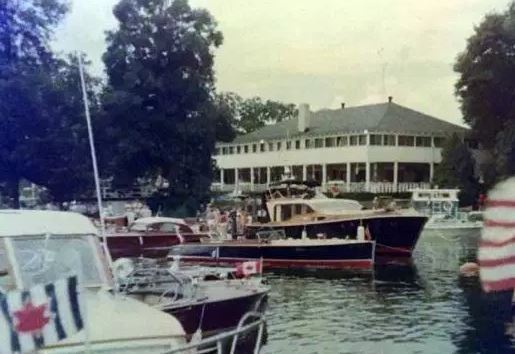
Whether you’re a visitor to the Rideau Lakes region, or living the ‘Lake Life’ like residents Ken and Carol-Ann McDougall, Rideau Ferry and its majestic, pristine waterways offers something for everyone.
With a rich history, and its striking beauty, the lakes are a wonderful place to pull up a chair and enjoy the view.
……………………………………………………………………………………………………………………………………………..
If you spend time around Rideau Ferry, you may hear these surnames that go back in the history of the area since the early days of the settlement:
Best
Bethune
Beveridge
Buchanan
Campbell
Cornell
Coutts
Covell
Crombie
Dettrick
Donaldson
Fitzgerald
Frost
Gallagher
Gemmill
Gould
Grierson
Hall
Hitchcock
Houze
Irving
Jackson
Johnson
Joynt
King
Mathews
McCue
McKay
McLean
McVeety
Millar
Miller
Moore
Oliver
Poole
Purdon
Reid
Richards
Rintoul
Runge
Sewell
Shaw
Smith
Stewart
Taylor
Thomlinson
Tully
Vandusen
Wallace
Wills
Wilson
Wood
——-
Excerpts on Coutts House, Rideau Ferry, and Al Capone’s heyday, taken from:“Lanark County Chronicle – Double Back to the Third Line” ISBN 978-0-9877026-26
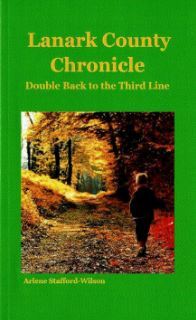
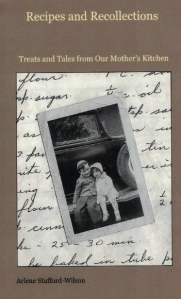
Arlene Stafford-Wilson
Honorary Life Member, Lanark County Genealogical SocietyMember, Association of Professional GenealogistsLanark County Pioneer Families Humanitarian AwardFrancois Bregha Storyteller AwardAuthor of : “Lanark County Christmas”, “Lanark County Comfort”, “Lanark County Collection”, “Lanark County Calling”, “Lanark County Classics”, “Lanark County Connections”, “Lanark County Calendar”, “Lanark County Chronicle”, “Lanark County Kid”, & “Recipes & Recollections”, and “Lanark County Kitchen: A Maple Legacy from Tree to Table”.Stories set in Lanark County:
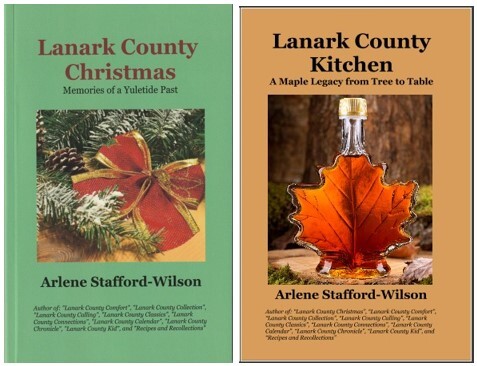
July 6, 2024
Life Lessons at Carl Adams’ on the Tay
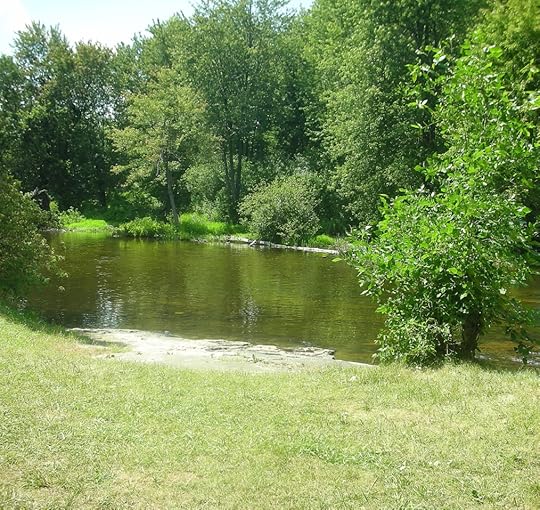
If I hadn’t been completely convinced that our Mother loved us, I might have questioned why she would have chosen Carl Adams’ swimming hole as a good place to teach us all to swim. Mother would drive us back there, two or three times a week, during the summer; usually after supper, and always at least an hour after we’d eaten – that was the rule. She said that it was dangerous to swim right after you’d eaten, and that you could get cramps, and possibly even drown. Of course, I’ve learned since then, that you can swim right after you eat, without either suffering cramps or drowning, for that matter, however, that was Mother’s rule and there was no point in arguing. So, whether we were at Silver Lake, for a picnic, Christie Lake for a quick dip, or Carl Adams’, for a swimming lesson – Mother always wore her watch, and no one could even so much as wade around in the shallow water, near the shore, until the full sixty minutes had passed.
It was always exciting to hear that we’d be going to Carl Adams’; especially on one of those hot summer days, when the upstairs of the house was stifling hot. Mother would announce that we were going to have a swimming lesson, and she’d grab her purse, and head for the garage. That was my cue to run upstairs, and change into my bathing suit, and get a towel. I’d also bring an extra one for Mother to sit on, because she liked to spread a towel out, on the flat rocks near the water, so she could offer some suggestions on improving our swimming technique.
I’d be changed in seconds, towels in hand and taking the stairs down, two at a time, and by that time Mother would have backed the car out of the garage, and be waiting, parked under the tall maple trees, that shaded our lawn. We’d drive out of the yard, and down the lane, turned right, headed toward DeWitt’s Corners, windows rolled down, taking full advantage of the warm summer breeze, blowing into the car.
Usually at that time of year we’d see at least one hay wagon on the road, as we drove up the Third Line. The hot, dry weather was ideal for cutting and baling the hay, and our neighbourhood farmers would be taking full advantage. It wasn’t unusual to get stuck behind a tractor, which was bad for two reasons – one, now we had to slow down and weren’t getting much of a breeze blowing through the hot car, and two – I couldn’t wait to get to the swimming hole, and this would be greatly impeding our progress. Sometimes, they’d pull off to the side so we could get by, but usually we’d just have to follow along behind, at a snail’s pace, until they’d turned off the road, and into a field.
If the road was clear, we’d be at DeWitt’s Corners in no time, and then we’d turn left up the dirt side road, past Clifford and Florence Munro’s. After a couple more turns on the dusty backroads, we’d arrive, and pull over by the flat rocks, under the trees.
It was a pretty spot, that’s for sure, with tall, graceful trees along each side of the rocks, framing that popular little section of the Tay River. People in Bathurst Township had been using that little swimming hole for years, and it showed. The broad, low rocks near the shore provided a natural seating area, the maple and willow trees offered welcome shade for spectators, and the cedar bushes all around gave off a fresh woodsy scent. This time of year, we’d hear the heat bugs in full force, and see the shiny dragonflies, swooping effortlessly above the water.
Sometimes we’d see a couple of empty beer bottles, or empty chip bags, or cigarette packs, piled on the rocks – souvenirs left behind by teenagers, parked there the night before. Occasionally we’d see the charred evidence that someone had built a little campfire; likely to cook a hot dog or two, or maybe toast some marshmallows. Once in a while, there might even be a toy, or a towel abandoned on the shore, forgotten by one of the neighbourhood kids.
After we’d parked, Mother would grab the towels, and spread one out on the rocks and settle down. Sometimes she’d bring a book or a magazine, or some crocheting to work on, but most of the time she’d just sit back, and watch us swim. Occasionally, Dickie Patterson, a local bachelor, would be riding by on his bicycle, and he’d stop, and sit, and chat, with Mother for a while, catching up on the local news. He lived up at Christie Lake, but we’d often see him riding, either on the Third Line, or on one of the backroads, such as these.
By the time Mother had settled down on her towel, I was already getting my feet wet, and assessing the temperature of the Tay River. Most of the time, it felt pretty warm near the shore, because the water was so shallow, and I’d gradually wade into the first few feet of the river, and then I’d begin to feel the power of the current pulling at my legs.
Now, back to my original question, of why Mother would have brought us here, to learn how to swim. Yes, it was in close proximity to our house; closer than Christie Lake, but here’s where the other questions arise. There is, as I mentioned, a fairly strong current, in this part of the Tay River. By the time I was in up to my knees I could feel it tugging at me. Now, in order to remain in roughly the same section of the river, you had to start moving against the current, otherwise it would pull you down. Once you were in all the way up to your neck, you had to start kicking or paddling at a pretty good pace, against the current, because the minute you stopped, you would be swept down the river. Oh, and let’s throw one more wrench into this picture, for good measure – remember the nice flat rocks up on the shore? Well those nice flat rocks – Canadian Shield, I suppose, well, they extend right out into the water – except that the ones in the water were coated, in slippery, green moss.
Just so you’ve got the whole picture – we’re here with Mother, because we don’t have our swimming abilities perfected yet – not even close. She’s brought us to a section of the Tay where there’s a fairly strong current, that keeps trying to sweep us off our feet, and when we do manage to try and get our footing, the surface below is slippery, wet, moss, that offers no traction whatsoever. Many times, I’d slip on the moss, and the river would start to pull me along, and I’d have to paddle and splash like a maniac, so I could get back to the place where I’d started. I often wondered if I didn’t fight my way back to the clearing, against the current, if I’d keep being swept along down the river, and end up somewhere in Perth!
The LessonSo, what was the point of learning to swim at Carl Adams’ swimming hole? Did Mother bring us there because it was convenient, and a quick ride from our house? Or, looking back now, was there a bigger lesson involved? Sure, once we learned how to swim there, against the strong current of the Tay – everywhere else we swam after that, seemed easy. No current? No slippery rocks to contend with? Swimming anywhere else after that, was a cinch.
Maybe learning to swim at Carl Adams’ was a metaphor for the struggles that we would face later in life. We’ve all had days where we feel like we’re fighting against a strong current, and moments in our lives that seem to have us perching precariously, on a slippery rock. At times we’re certain that if we gave up the fight for even a minute, we’d be swept away down the river.
Looking back now, we learned so much more than how to swim at that quiet, unassuming little spot along the Tay River. Many, many years ago, at Carl Adams’, we discovered that if we kept chugging along, persevering, and made it past the rough spots, that eventually we’d end up back at the little clearing, warmed by the sun, leaves fluttering softly overhead, Mother smiling from the shore, and us, feeling all the stronger for the struggle.
* * * * *
(an excerpt from ‘Lanark County Kid: My Travels Up and Down the Third Line’, ISBN: 978-0-987-7026-16)
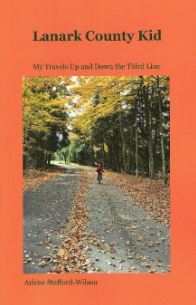
Arlene Stafford-Wilson
Honorary Life Member Lanark County Genealogical SocietyLanark County Pioneer Families Humanitarian AwardFrancois Bregha Storyteller AwardMember Association of Professional GenealogistsJuly 5, 2024
Silver Lake Sundays
It always seemed as though Highway 7 was busy, cars and trucks rushing along, especially on the weekends, and even more so during the summer months. According to Dad, it wasn’t just the local people travelling between Perth and Sharbot Lake, but all the tourists that rambled along the Trans-Canada Highway, doing a little sight-seeing, and exploring the countryside. Whatever the reason, Highway 7 was busy as usual that Sunday afternoon so long ago, as we made our way to Silver Lake.
Although it was just a twenty minute drive from the old house, the ride seemed to take forever, our legs sticking to the hot vinyl seats in the back of the Buick, long before the days of air conditioning. It wasn’t until I saw the signs for the village of Maberly that I breathed a sigh of relief, knowing we’d be there in just a few more minutes. Dad flicked on his signal, I felt the car slow down, and we turned, and drove up the hill to the entry booth at Silver Lake Provincial Park. The park worker came over to the window, Dad showed his seasons pass, and he waved us through.

Dad found a spot close to the picnic area, and we drove in and parked the car. That was the easy part. The tricky part was finding just the right picnic table. Dad liked a table to be in the shade. Mother preferred a place with a little sun. Dad said he needed to be out of the wind so he could light his little green Coleman stove. Mother liked a breeze to keep the bugs away. So the hunt for the best table usually took a little longer, sometimes a lot longer, than it should have. After all, we just wanted to cool off in the water, and that beautiful lake stretching out ahead of us, sparkling in the sun, was all we could think about. Who cared where we ate supper?
The hunt for the perfect table continued. Should we use one of the tables under the shelter in case it rained, or maybe one of the ones farther up the hill, off by itself? There was a good table close to the main beach, but there were a bunch of rowdy people sitting at the table right next to it, and Mother wondered aloud if that’s why no one else was using it.
They finally spotted a table halfway up the hill, toward the lower beach, and sent one of us up the ridge to ‘save’ it. Dad opened the trunk, and we each grabbed something, and made our way up to the table. The table cloth, Coleman stove, cooler, plastic cups and plates, paper napkins, transistor radio, saucepans, and cooking utensils, were all brought to the site. We hauled the picnic gear up the slope, and set it all down on the seats, while Mother spread out the red plastic table cloth. It wasn’t until we placed the big cooler on the table that we noticed that the table rocked back and forth. Good grief! I hoped to myself that we wouldn’t have to pick another table! Dad got the boys to lift one end, while he lifted the other, and re-positioned it until it was stable. What a relief!
While Mother took everything out of the cooler, Dad turned on his portable radio, extended the antenna, and went about setting up his little green metal stove.
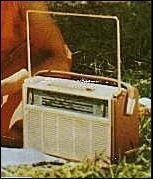
I grabbed a towel from the top of the cooler, and headed down to the beach, finally free to jump in the lake and get cooled off. As I got closer to the beach, the noise and laughter from all of the kids grew louder, and I could see people jumping off of rubber rafts, and throwing beach balls around, and some little kids were filling up sand pails, and making sand castles along the shore.
I stepped cautiously into the shallow water along the sandy shore and it felt cool. Because I was right in the center of the main beach, I got splashed again and again by the other kids running in and out and jumping nearby. I walked out slowly, up to my knees, and then finally plunged in all the way, and the water didn’t seem cool anymore; it was just perfect. There was a kid close by with a diving mask on, and another kid with a fancy inflatable raft, and he was gliding along the surface using his hands to propel himself. I wondered what it would be like to have these expensive gadgets to play with in the water. We had an old beach ball that kept shrinking because it leaked air, and that was about it. Oh well, it was fun to splash around and cool off just the same.
I put my face in the water and opened my eyes. The bottom was sandy, with some smooth pebbles, and a couple of snail shells. There were some tiny minnows darting around, and lots of arms and legs of kids playing nearby. I pulled my face back out of the water, took a deep breath, and propelled myself down to the bottom, pushing the water back with my arms, moving farther from the beach. When I felt myself running out of air I resurfaced, rubbed my eyes, and looked back at the beach. There were lots of parents relaxing in lawn chairs, watching their kids swim. Little kids were playing close to the shore, and bigger kids were splashing around, squealing, laughing, and the bright July sun gleamed and glistened on the surface of the water.
I played in the water for hours, bobbing at the surface, swimming along the bottom, jumping into the gentle waves, and floating on my back and kicking my feet, then gliding backwards, staring up at the bright sun and the blue sky. I watched as new kids came into the water, and other kids left the beach, heading over to the playground, past the parking lot. By the time Mother came down to the beach to call me for supper I’d had plenty of time to swim, my fingertips were wrinkly, and I was ready to come out of the water.
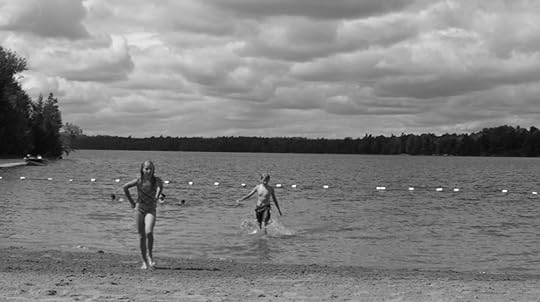
As we walked up the path to the picnic table I began to smell the gas from the Coleman stove, and the savoury scent of the hot dogs, and I began to realize how hungry I was. The fresh corn was already boiled and stacked on a tray. There was a bowl of baked beans, a homemade potato salad, some deviled eggs, homemade rolls, pickles, and a jellied salad. Everything tasted good, partly because I was hungry from swimming, but mostly because we were outside. Things always seemed to taste better outdoors in the fresh air for some reason. Dessert was Mother’s lemon squares. There was also a cookie tin of brownies, and some butter tarts. No one went hungry at our picnics; that was for sure.
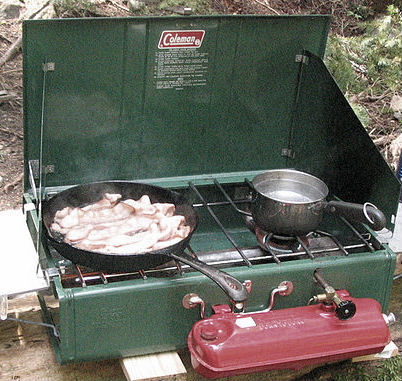
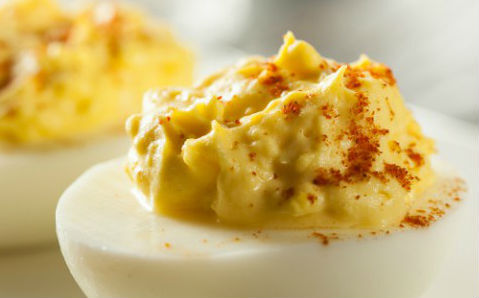

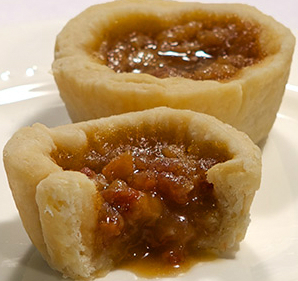
After we’d finished and cleaned up, we decided to walk across the road to Barbary’s store. The traffic was very busy on Highway 7, so we had to wait quite a while until both lanes were clear, and then walked quickly across. The store was huge, and they had everything – groceries, camping gear, water toys, even life jackets; anything that you might need if you were camping, or visiting the lake. They had lots of souvenirs, postcards, and knick-knacks for tourists. Dad asked me if I’d like a chocolate bar, but I’d spotted something even better. The store carried Partridge Family bubblegum cards, and I was collecting them, so I asked if I could have those instead. Dad agreed and bought me those, and bought chocolate bars for everyone else, and he also picked up a fly swatter that he’d spotted hanging up by the cash register.
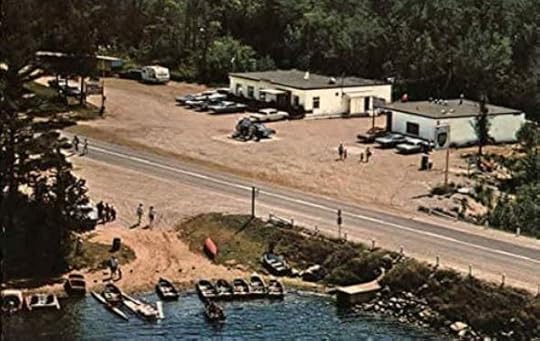
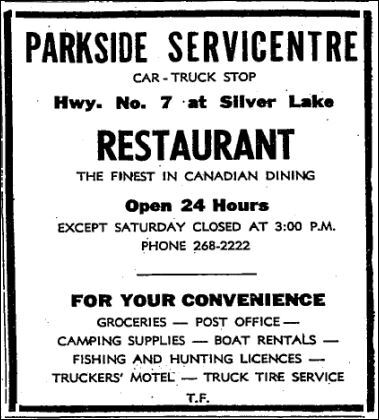
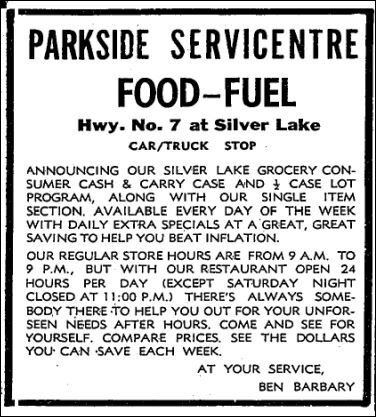
We left the store, and once again waited a while until the road was clear, and walked quickly across. We strolled up the hill to the park entrance, through the gates, past the washrooms and change rooms, down the hill through the parking lot, and back up to the picnic table. We each picked up something, and headed down the hill to the car, and packed everything back into the trunk.
Once the car was packed, we went for a walk along the smaller, quieter beach on the other side of the picnic area. It was more peaceful at that beach, and there were only one or two kids with their parents down near the water. As we walked along I picked up some smooth stones, and a couple of snail shells, to bring back home. The early evening sun was lower in the sky, but still bright, and it bounced and played off of the water, and shimmered through the trees along the shore. The air was fresh and clean, and carried with it the soft scents of the lake and the nearby trees.
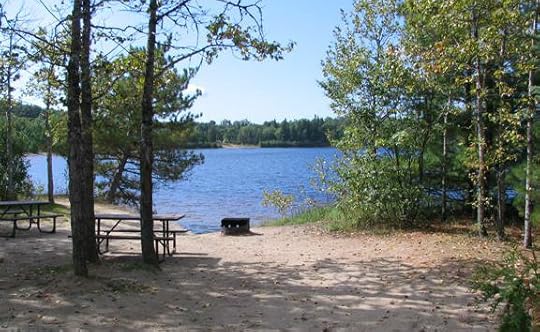
Many Sunday afternoons were spent at Silver Lake. There were no splash pads, or giant water slides. We swam without water wings. Our only concern was how fast we could get into the lake to swim, and not how we looked in our bathing suits. The old car had no air conditioning, and our entertainment at supper consisted of a small transistor radio. If we wanted to call a friend we had to wait ‘til we got home and hope that none of the neighbours was using the party line. We filled our dinner plates time and again, stuffed ourselves with desserts, and never counted a single calorie. We didn’t send text messages; instead we talked to each other, and shared a few laughs.

Although there have been many useful advances in technology since those days, I will always treasure our simple summer picnics. I yearn for the clear water, the beach-scented air, and quiet walks along the sandy shores. I miss the shrieks of genuine laughter, and carefree splashing in the warm waves. I dream of the distinctive smell of the Coleman stove, and the unmistakable flavours of the homemade comfort foods. Most of all, I long for the effortless, unguarded conversations that we shared between bites. Surely in today’s hectic, stressful world, constantly connected to the internet, we could all find some welcome relief in the peace, tranquility and simplicity of an old fashioned picnic at the lake.
Arlene Stafford-Wilson
Honorary Life Member, Lanark County Genealogical Society
Lanark County Pioneer Families Humanitarian Award
Francois Bregha Storyteller Award
Member, Association of Professional Genealogists
Author of : “Lanark County Christmas”, “Lanark County Comfort”, “Lanark County Collection”, “Lanark County Calling”, “Lanark County Classics”, “Lanark County Connections”, “Lanark County Calendar”, “Lanark County Chronicle”, “Lanark County Kid”, & “Recipes & Recollections”, and “Lanark County Kitchen: A Maple Legacy from Tree to Table”

